In November 2015, my brother Jordan and I set off on a two week trip to climb the third highest peak in North America, Mexico's 5,636-meter / 18,491-foot Pico de Orizaba. Fortunate timing allowed us to also complete an ascent of Mexico's third highest peak, Iztaccihuatl (5,230 m / 17,159 feet). The expedition was self-supported. The following photo essay explores the journey through prose and picture, luring the reader into a tangible world of clammy Mexican metros, organ-shifting truck rides and lonely twilight glacier traverses.
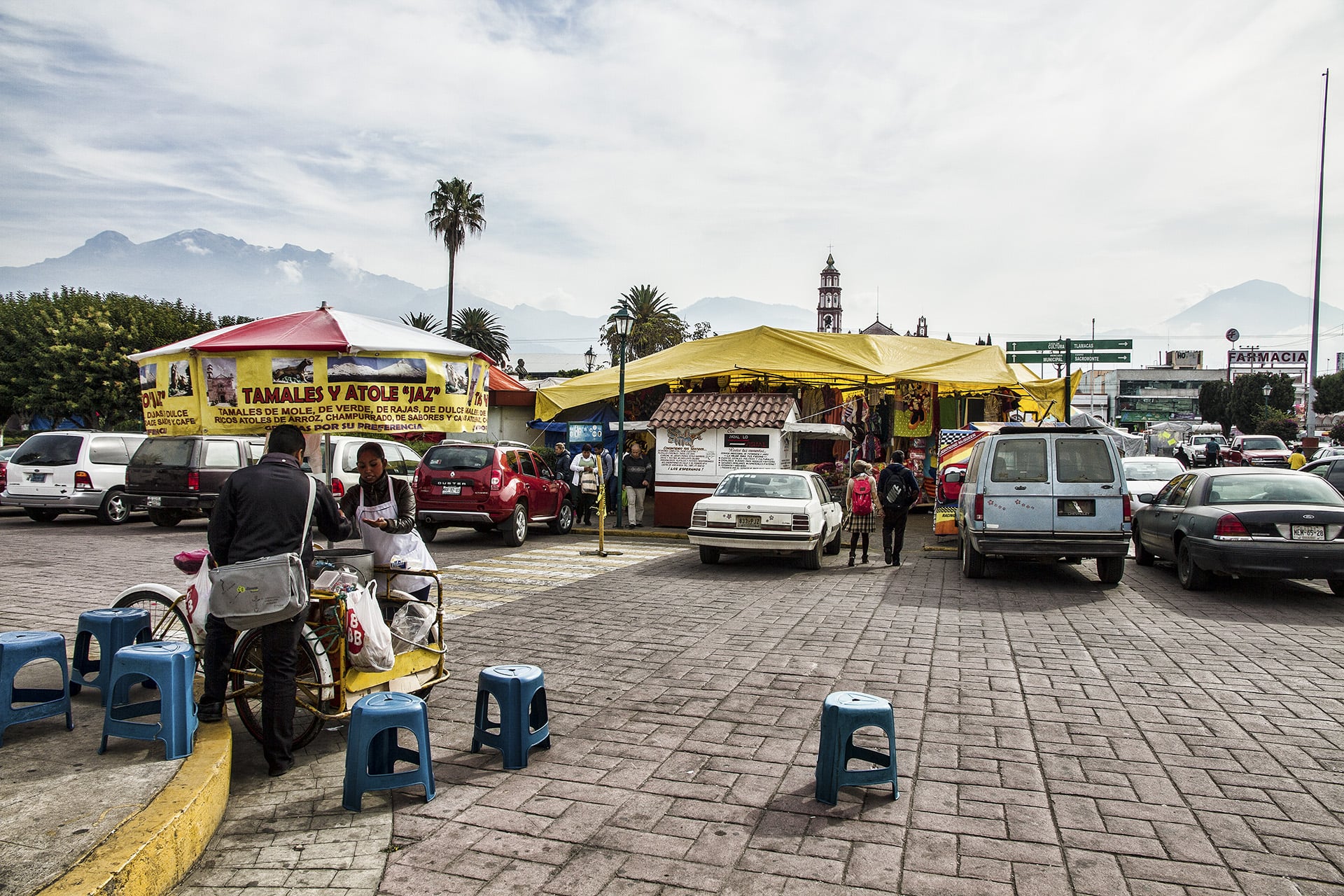
As is common amongst mountaineers, reaching the summit of one mountain serves to reveal the unclimbed high points of others. It was from the roof of Mexico that we spotted the curious shape of our next objective stretched along the horizon. Laying tranquilly next to the fuming Popocatépetl, the 5,230-meter (17,159 ft.) Iztaccihuatl has the distinct shape of a woman laying on her back, sleeping, with each of the peaks forming the head, the chest, the knees and the feet. When snow-capped, it is no wonder the volcano’s Nahuatl name translates into ‘white woman.’ We set our sights on Amecameca, the small town from which we take a colectivo to Paso de Cortés. From there it is another 7 km along a heavily-rutted track to La Joya, the start of the climb.
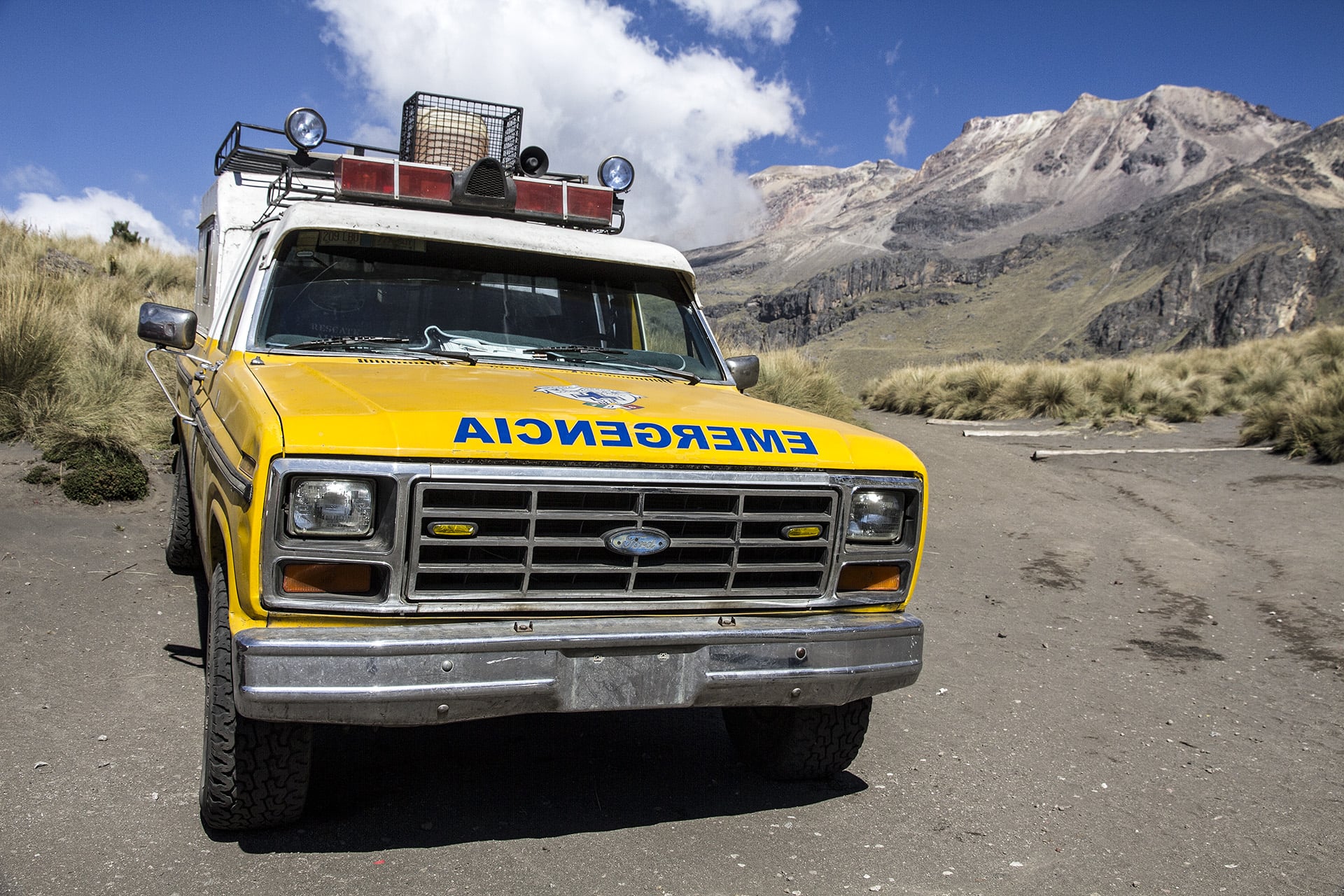
At the trailhead, we register our names in a hand-written logbook presented to us by a ranger. The men and women volunteers who constitute the mountain rescue teams provide a safety net for the legions of hikers and climbers that arrive every weekend to tackle the mountain. Hundreds of scribbled names fill the pages before us. Being that it is Sunday, the ranger informs us that we are the only ones to pencil our names in his book that day. With a skeptical pause, he explains that the rescue units will be leaving shortly and that we will be on our own. He gauges our reaction. Jordan and I exchange knowing grins. Fait qu'on soit pas emmerdé.
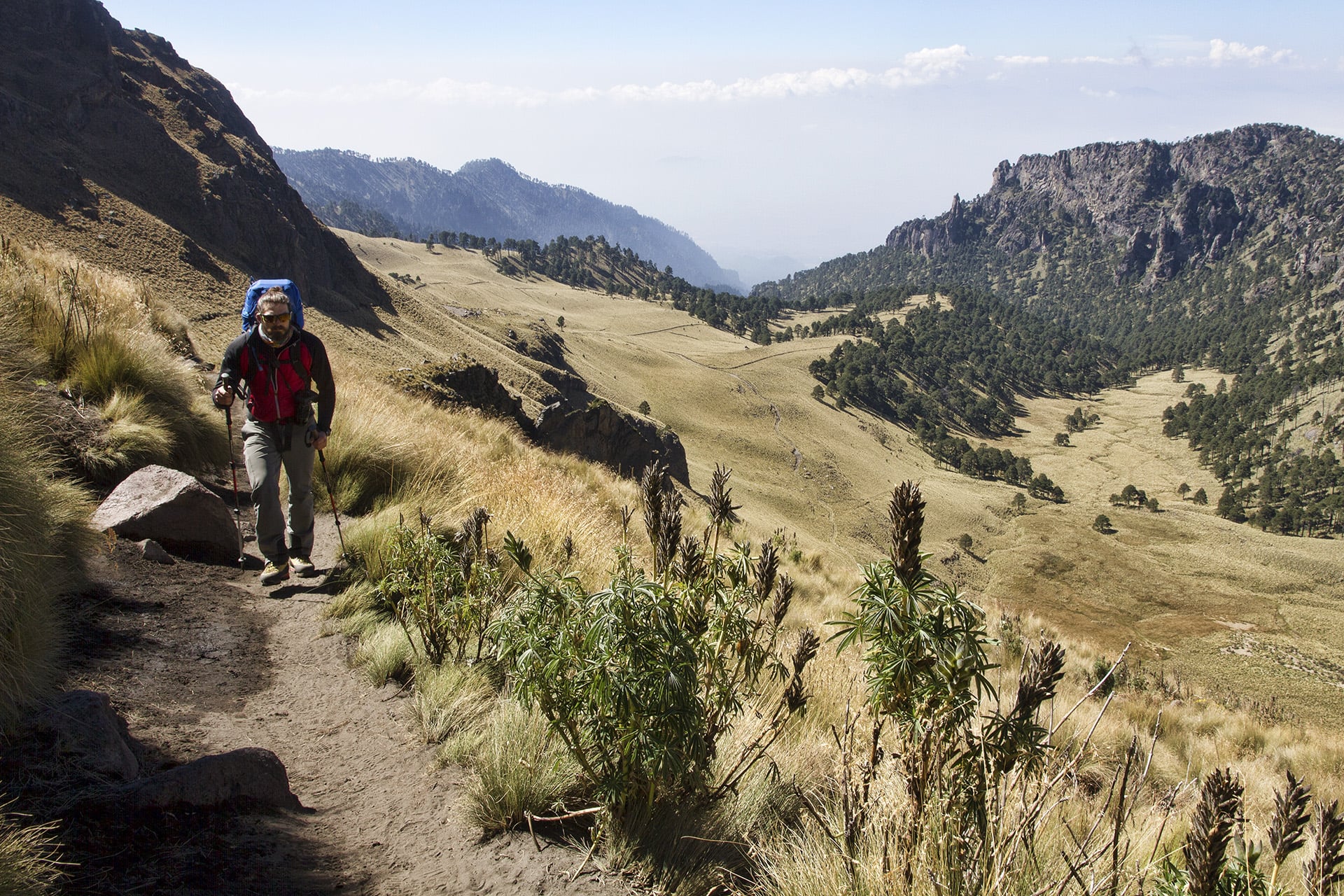
We leave the treeline bound for the taupe slopes.
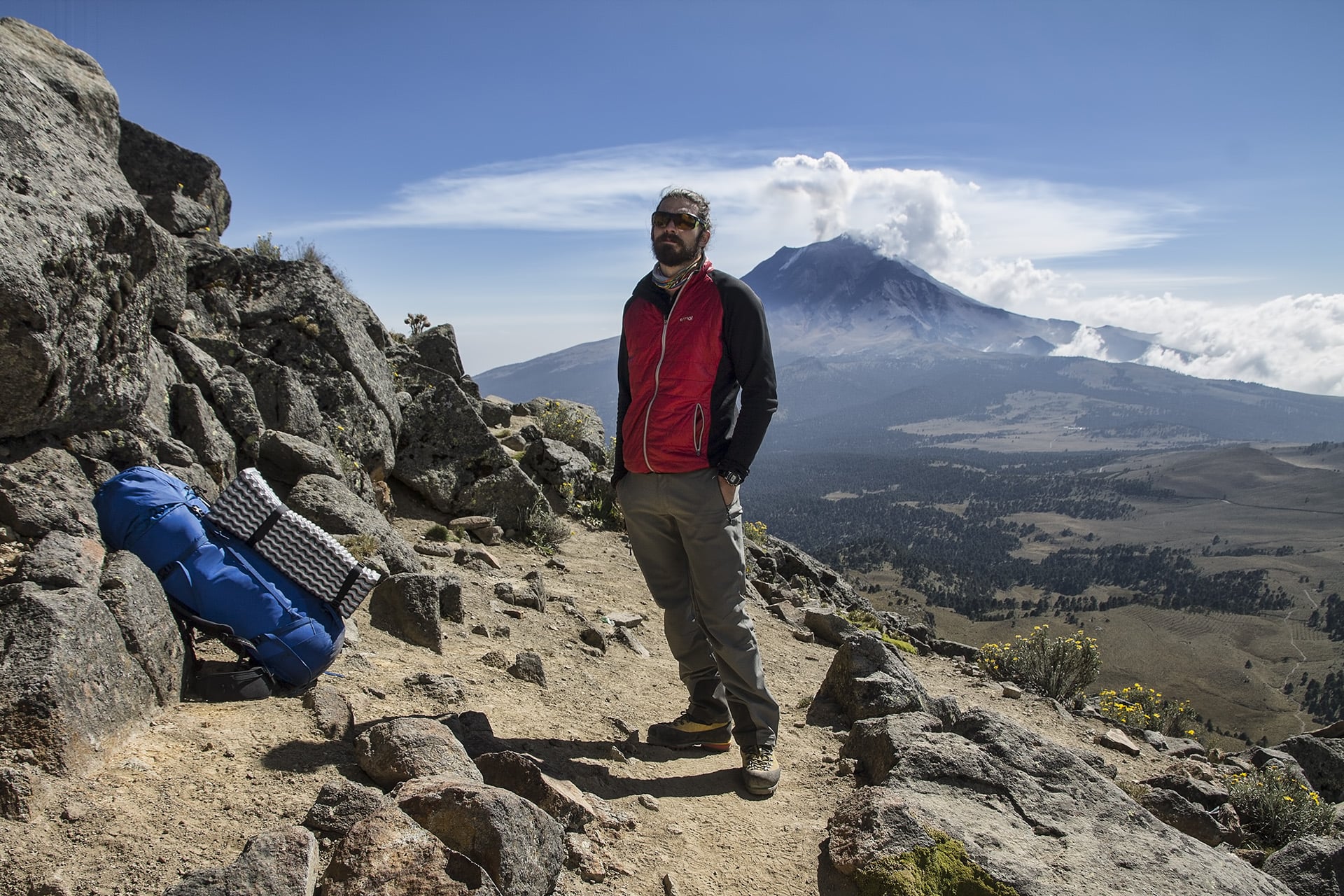
It is in the middle of photographing a small eruption on Popocatépetl that my camera ceases to function. My heart sinks. My shutter mechanism has locked up and my attempts to revive the body are futile. My mood begins to slip away as I curse my luck. In his non-chalant way, Jordan silently extends his own camera toward me. Take it.
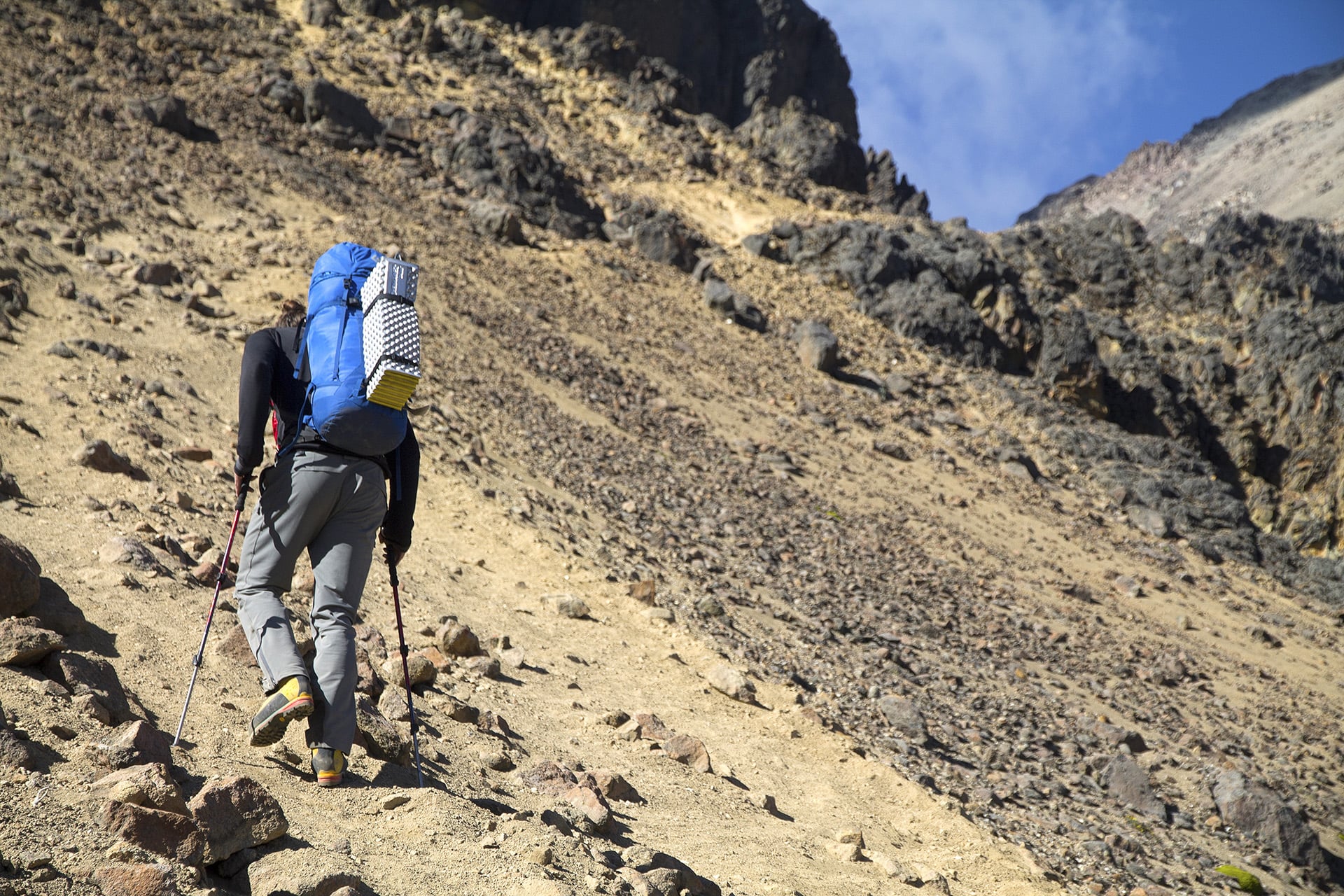
Jordan and I sometimes have long stretches where no words are exchanged. Mountains and travel have a way of inducing silence and hushing sentiments. As he trudges upwards, however, I express my gratitude with a few simple words. A capable climbing partner is efficient in their ropework, effective in their gear-placement and adept in their navigation of the emotional landscape.
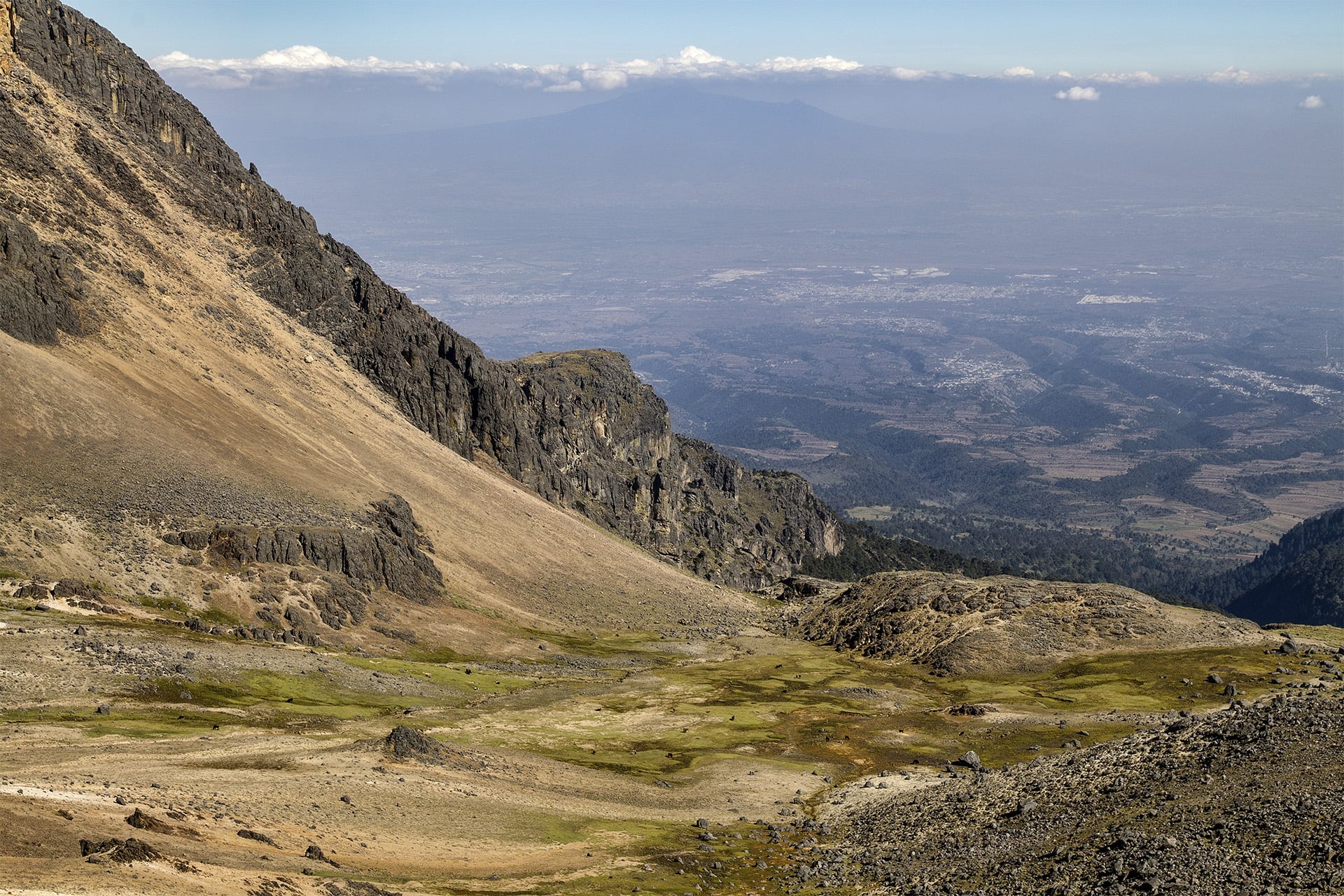
We leave high altitude pastures for the scree and talus fields of the sleeping woman.
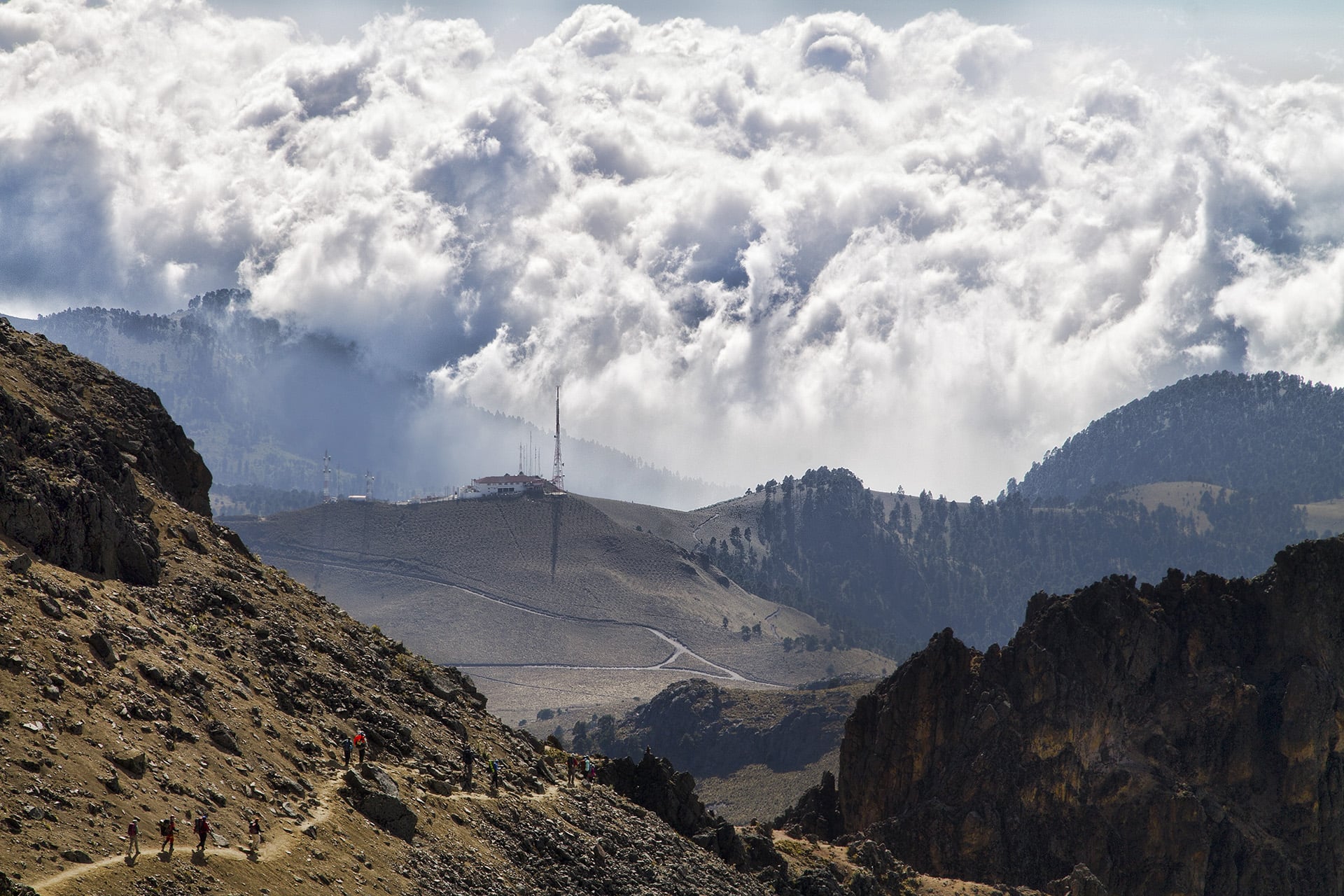
A moody bank of clouds begins to burst over the volcanic range’s foothills. The terrestrial levee can only sustain so much.
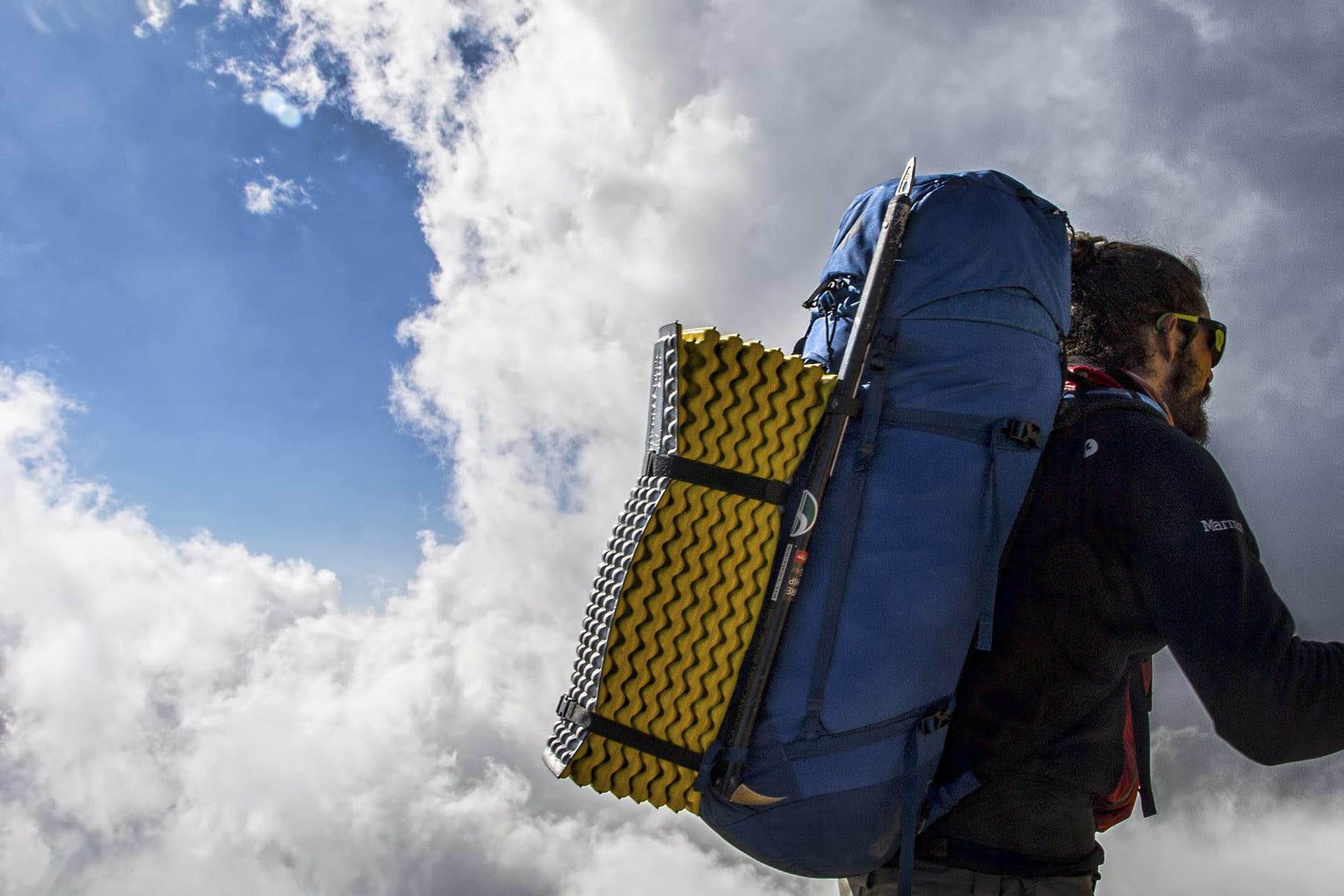
‘Buenas tardes… buenas tardes… buenas tardes’ is the mantra of the climber ascending on a Sunday as the flow of traffic is almost exclusively downward.
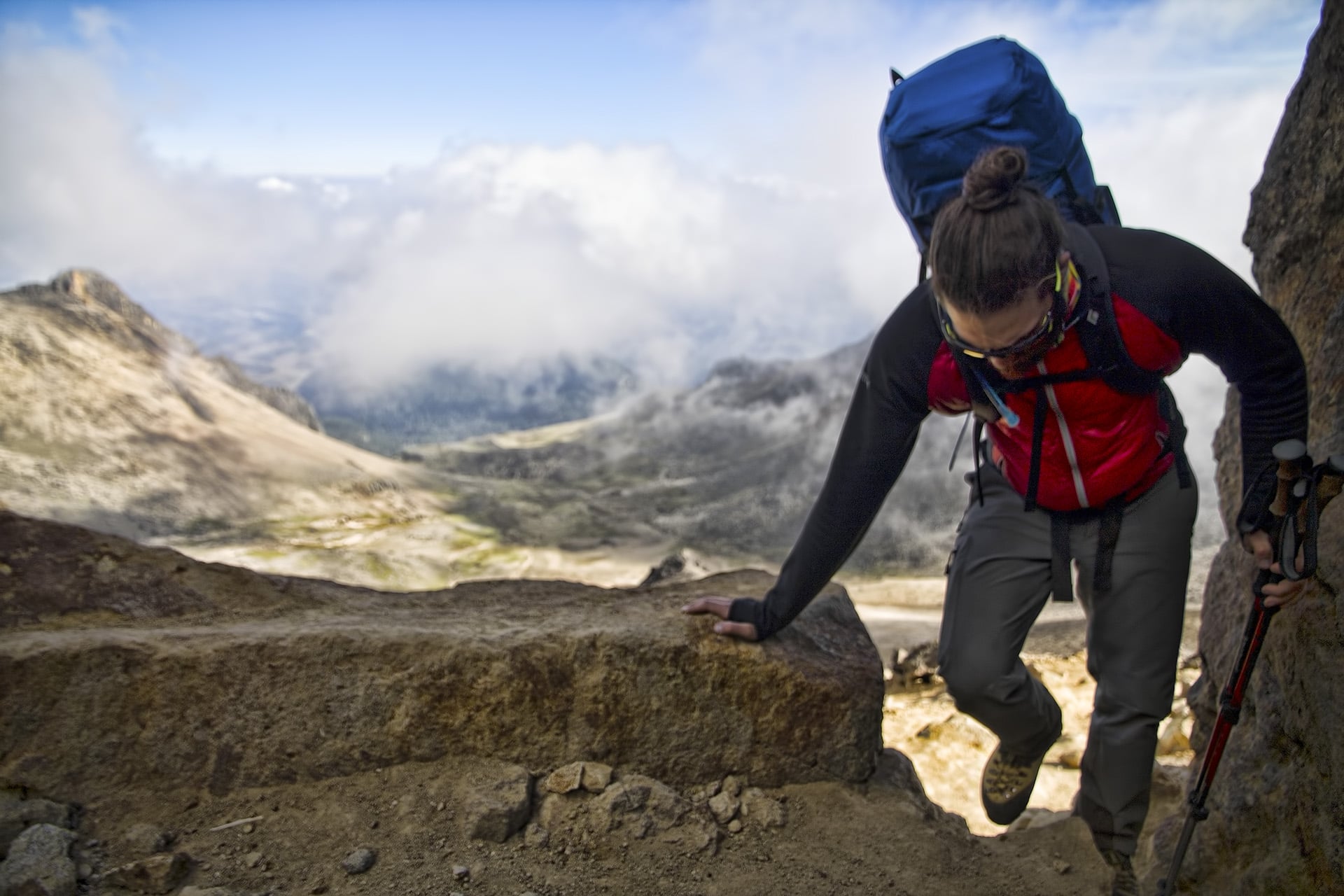
Small spaces and low light test my ability to adapt quickly to my stand-in camera body. The crux of climbing Iztaccihuatl is undoubtedly dodging rockfall from descending climbers in the chutes. Not wanting to risk a frontal encounter with volcanic geology, we wait until they clear.
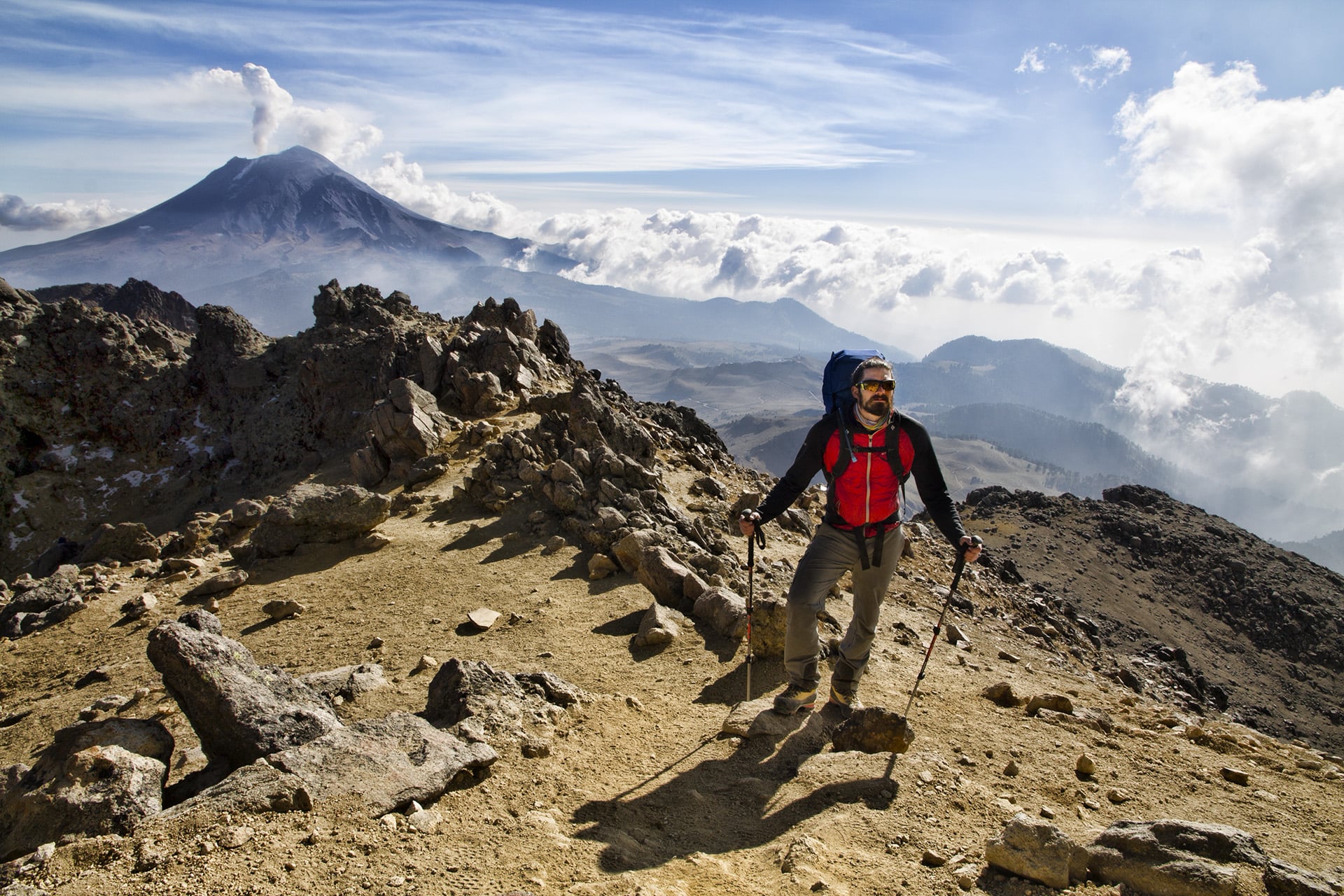
An irritated Popocatépetl launches tufts of smoke into the atmosphere, then fall back down to a more stable elevation far below the summit. Rippling cirrus clouds seem to emanate outward from the axis of the crater.
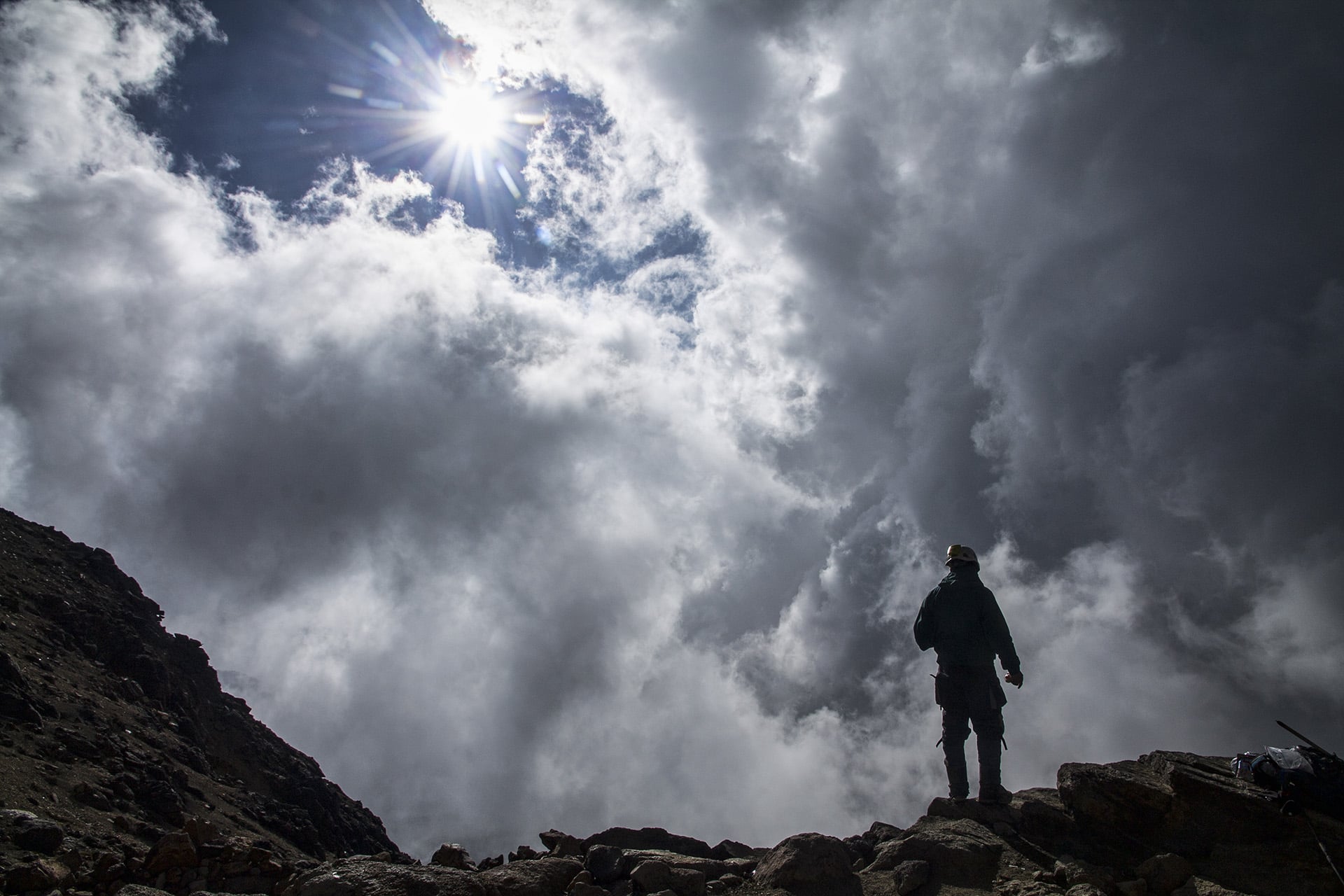
Cresting another ridge, we catch a glimpse of base camp. Another team of mountain rescue volunteers is busy radioing to colleagues higher on the mountain. Airy white clouds form on the western flanks of Iztaccihuatl. Knowing the team is going to leave soon, we engage them in as much conversation as possible before having to go back to scraping the depths of our own brains to find a topic we haven’t talked about yet.
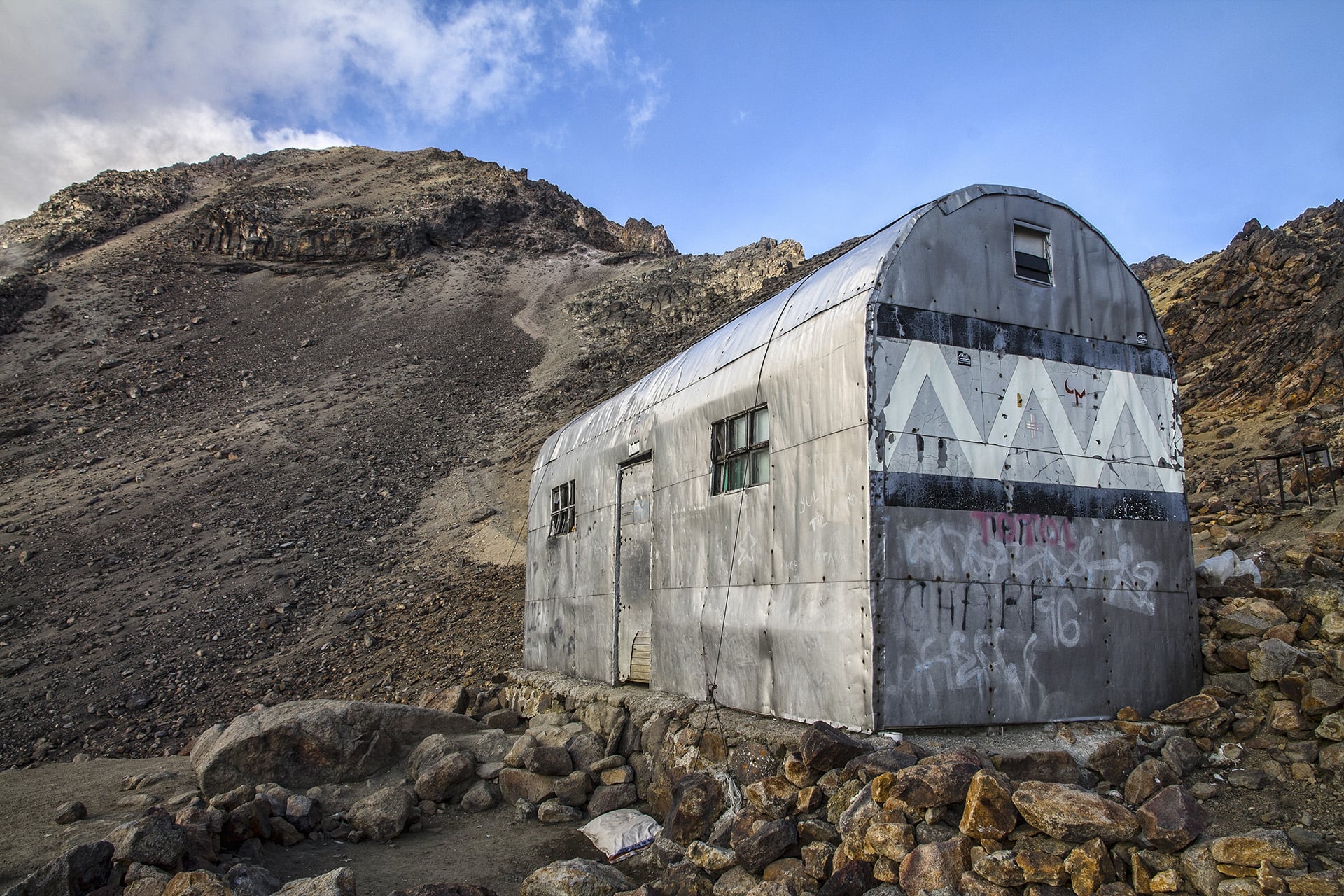
The team informs us that we should expect a cold night, especially being only two people in the hut. The recent weeks have seen an abnormal weather system coming down from the Gulf of Mexico resulting in colder-than-usual temperatures. We’ll have 10-15 degrees Fahrenheit after the sun sets. As the slopes above us become socked in with clouds, we retreat to the relative safety of the Refugio de los Cien. Another night encased in a tin sarcophagus.
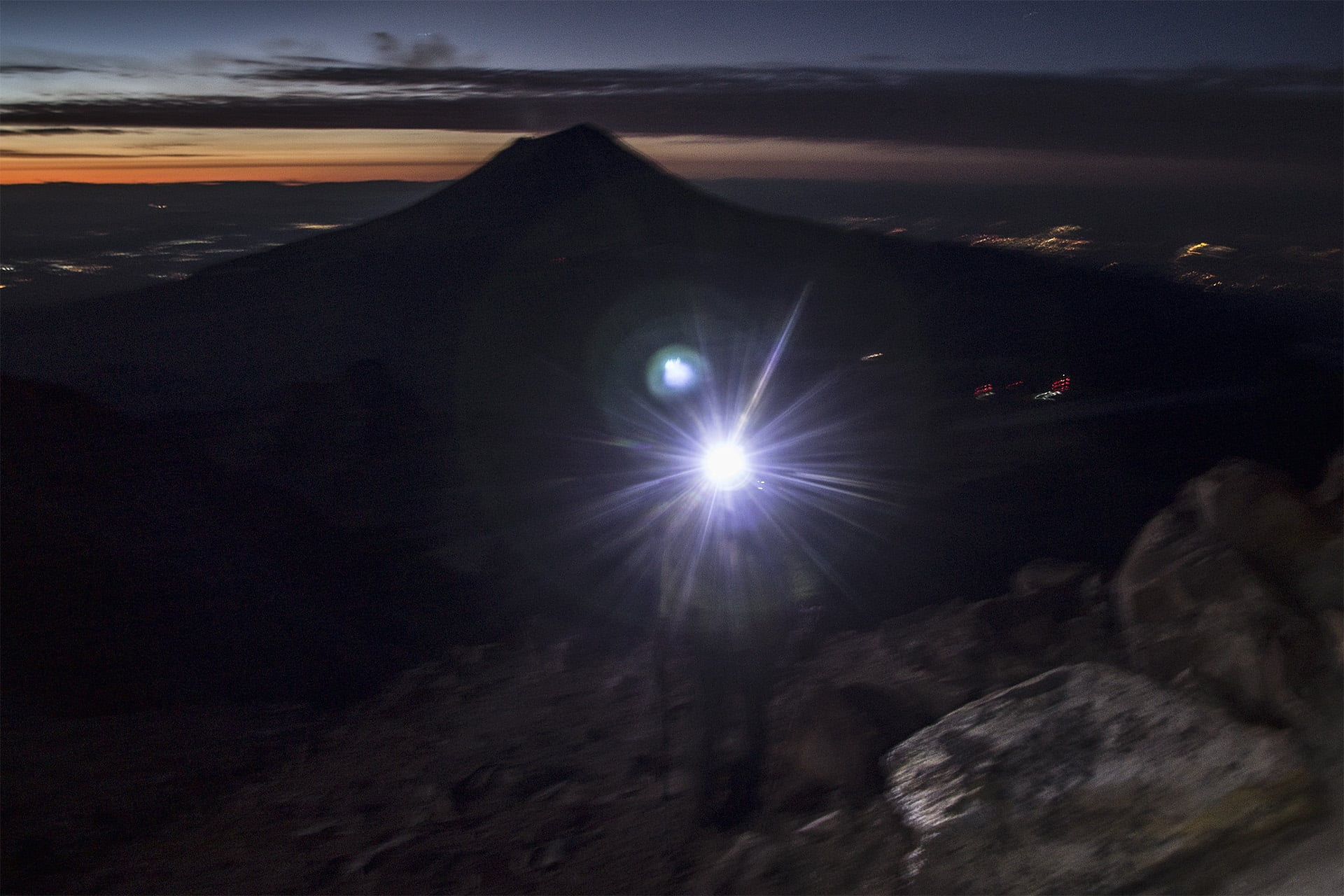
All night I am slightly perturbed by the story told to me by the hotel manager the day before. It was only 7 months ago that several men disguised as climbers and armed with shotguns assaulted and robbed a group of climbers in the very hut that I am sleeping in. Logic, reason and experience remind me how rare of an occurrence something like this truly is. As is becoming a custom of mine in huts, I find some solace in watching mice scurry about the floorboards while wind tries to find its way through gaps in the doorjam.
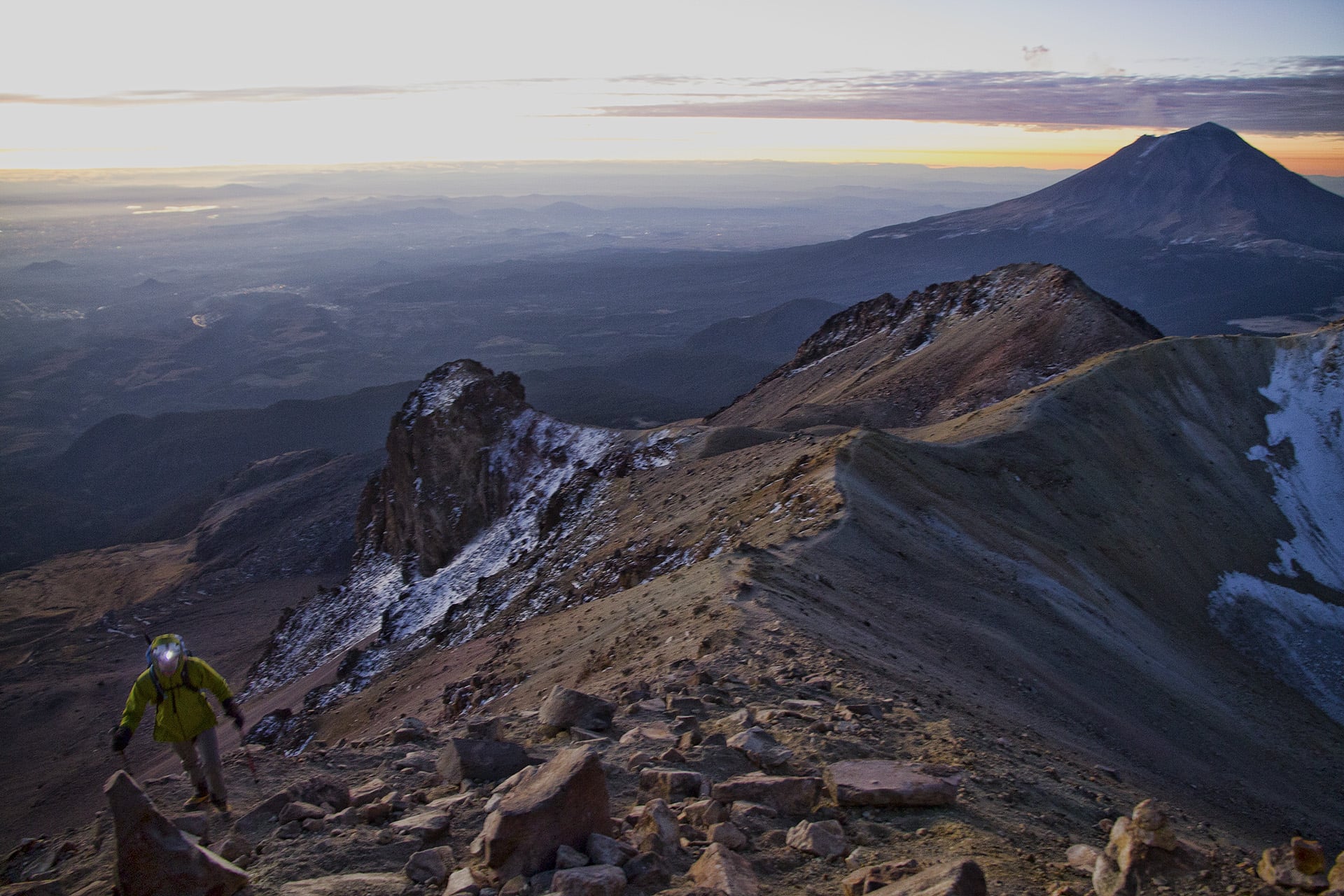
A late alpine start at 3:30am speaks to our confidence in being able to get up to the summit and back down without much of an issue. Luckily the wind has died down, but the twilight air is still cold enough to cause a throbbing numbness in our toes and fingers.
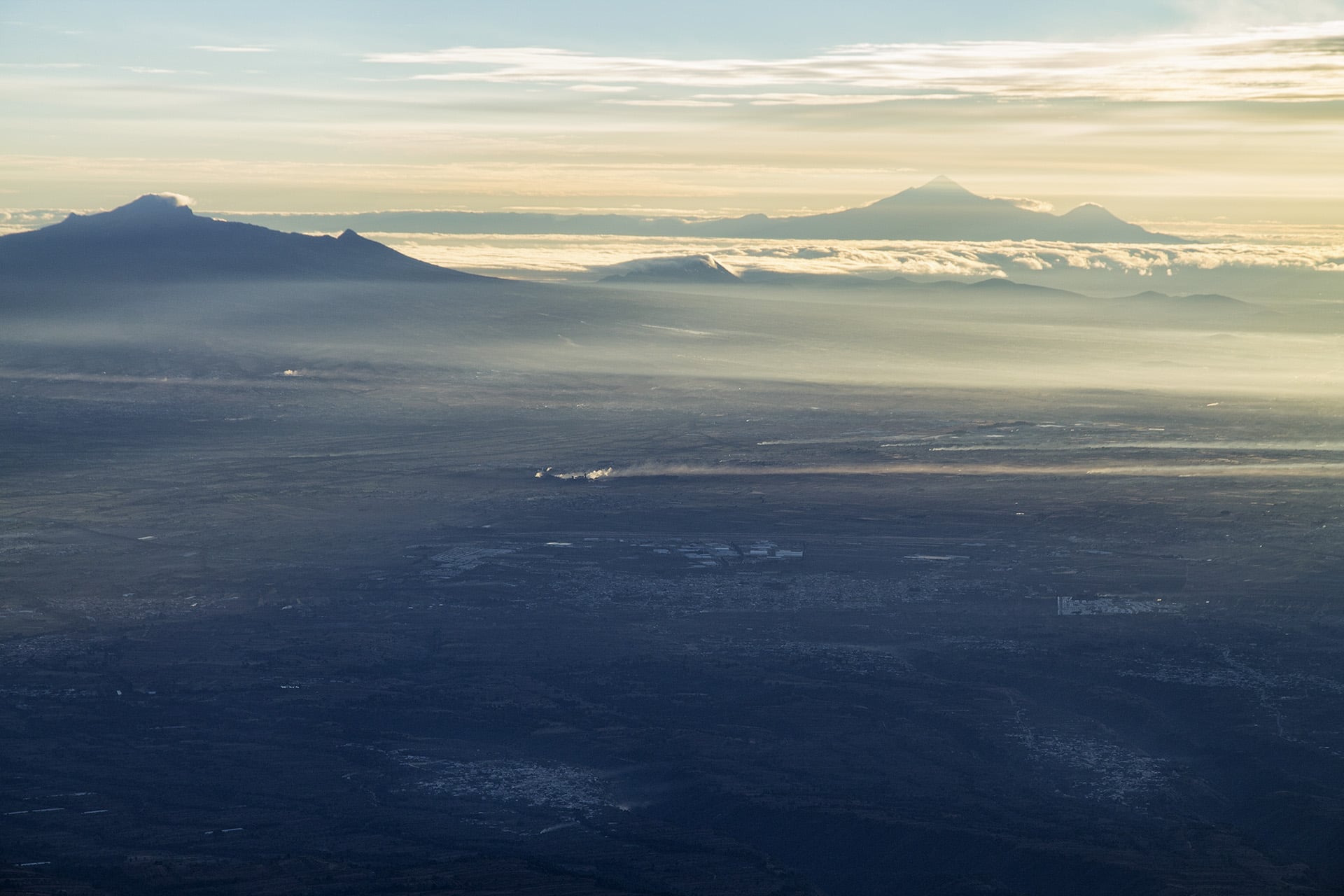
A previous conquest far in the distance greets us under the glow of a new day.
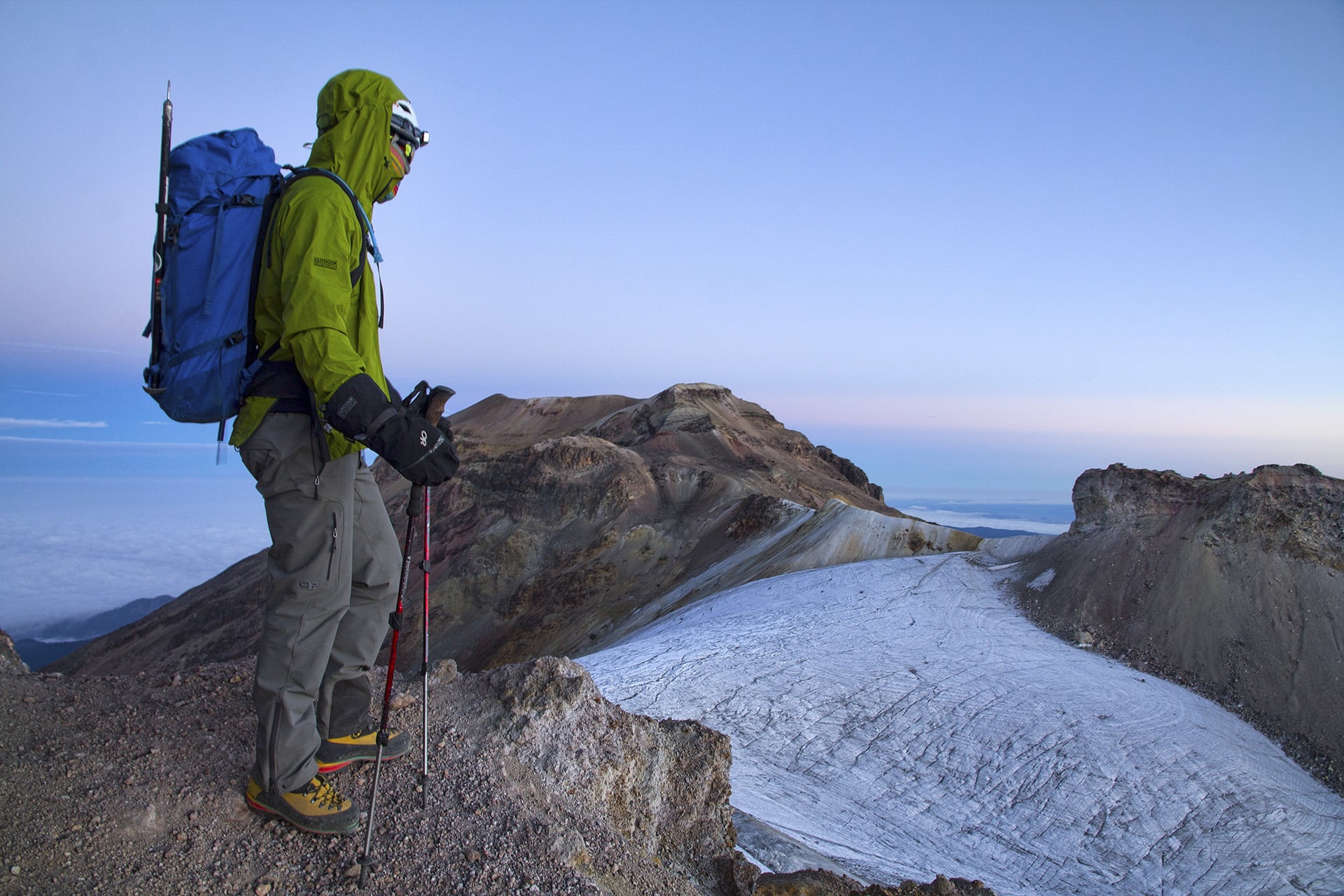
Each false summit reveals a new landscape beyond it. The “belly” of the sleeping woman is a heavily-crevassed glacier that saddles both the eastern and western flanks of the mountain.
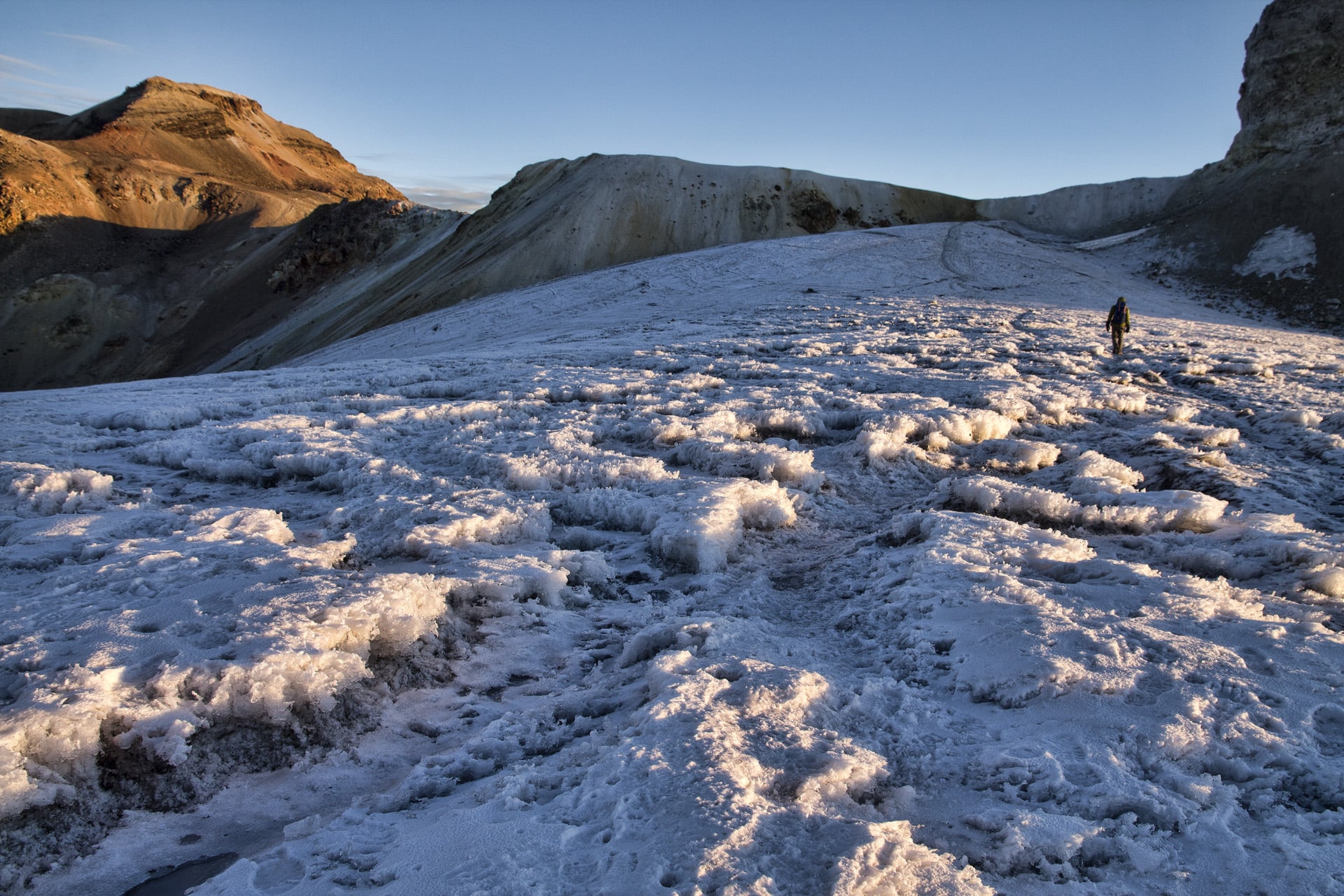
Crossing the glacier, however, is straightforward. None of the crevasses are large enough to pose a threat and can be easily circumnavigated.
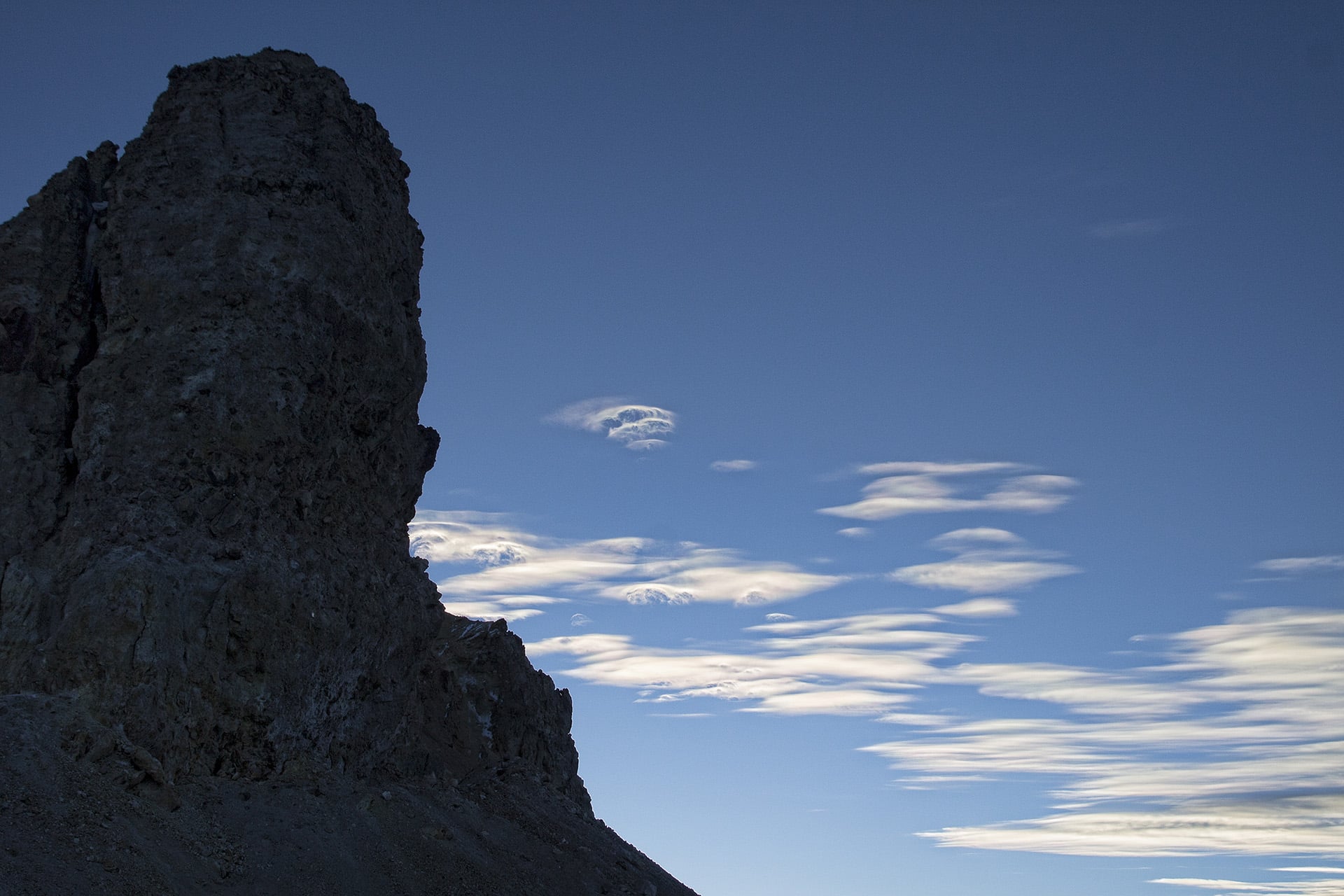
The atmosphere continues to put on a spectacular show.
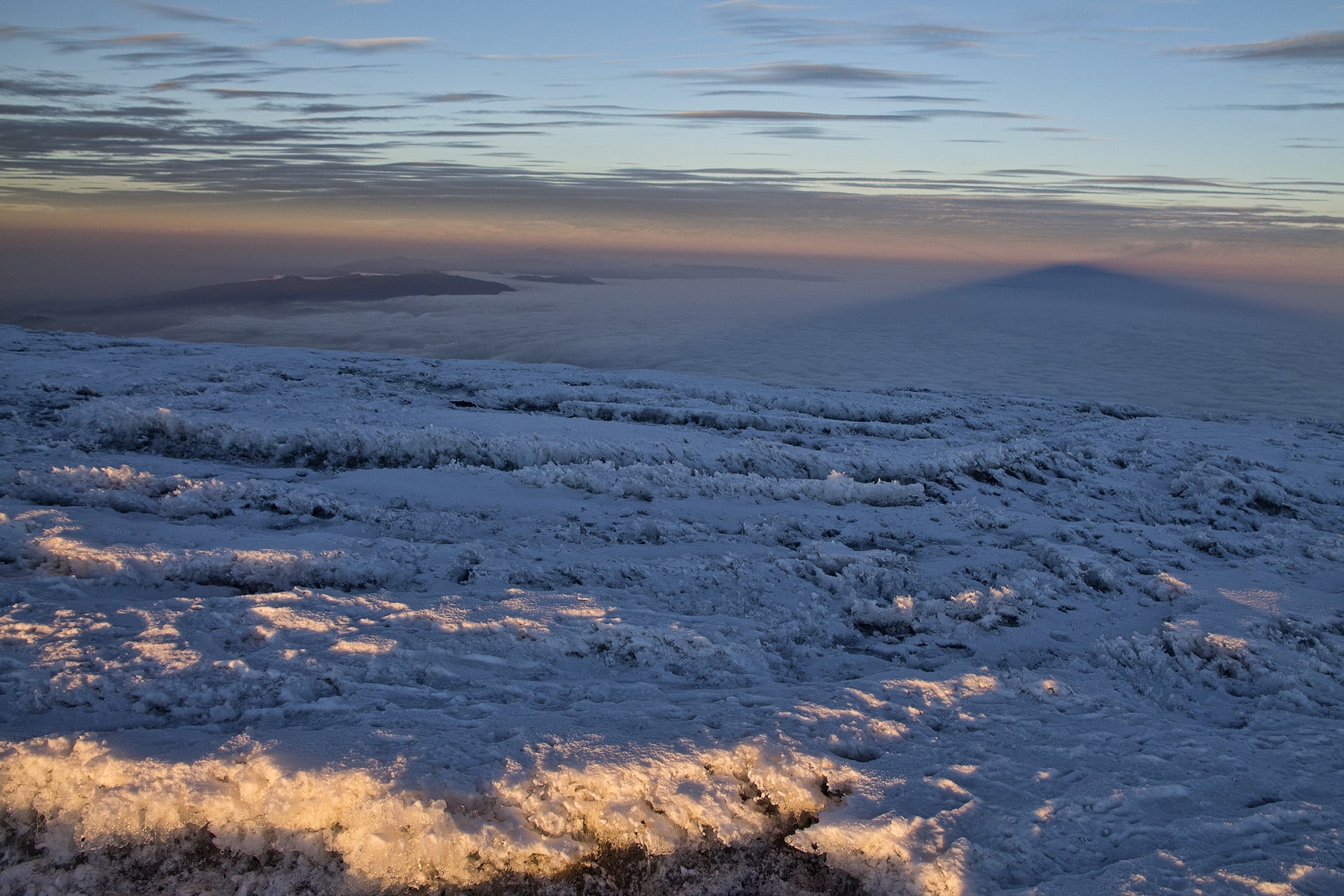
A sea of cloud is the perfect canvas upon which to project one’s shadow.
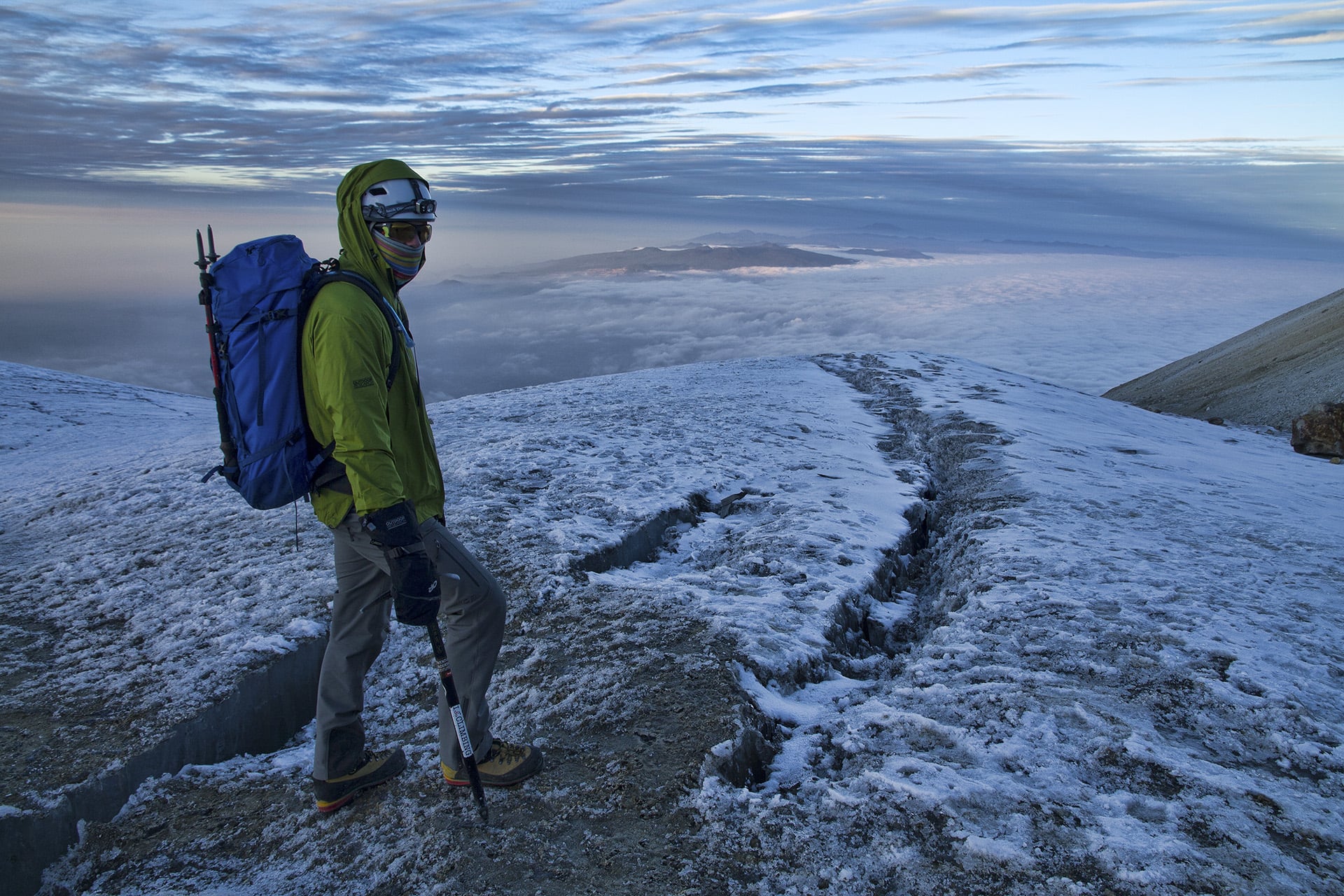
The crevasses are reminders that a glacier is a perpetually evolving entity. As with most glaciers around the world, this is another that has been shrinking in volume for some time.
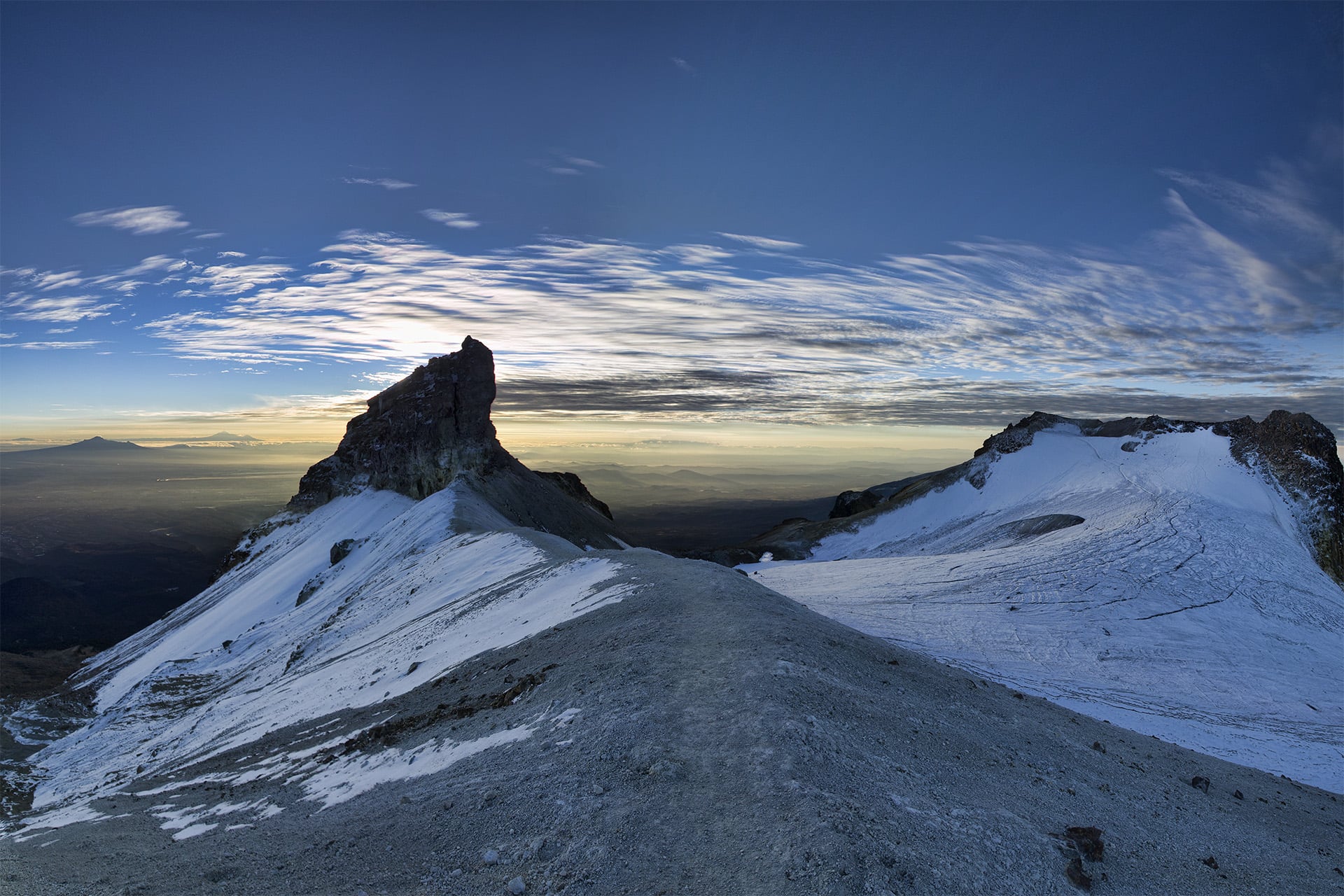
Our ascent slows considerably as we make it a point to soak in the spectacle of the waking world.
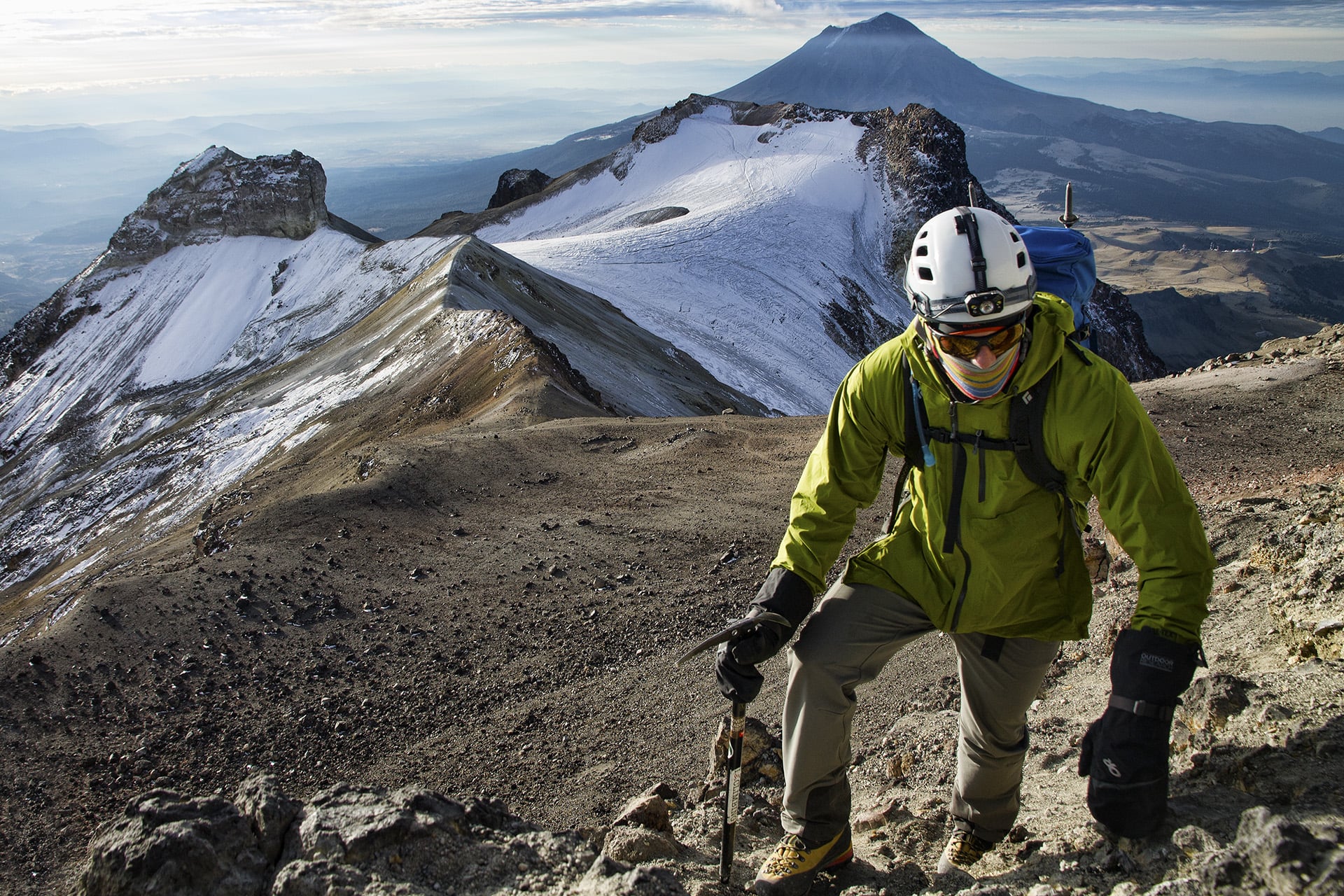
From the belly glacier, we begin the short climb to the last false summit.
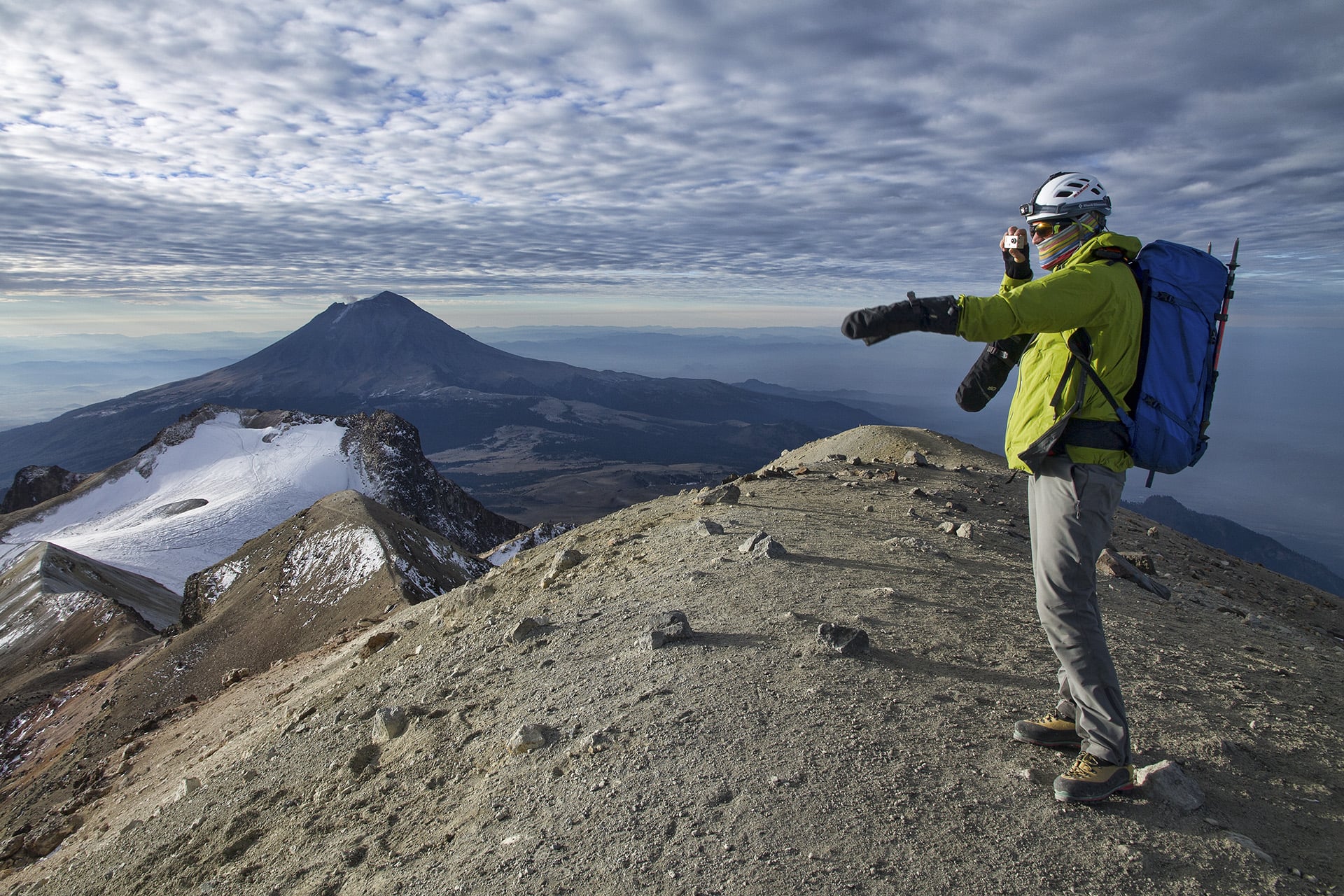
This false summit is one of three high points on ‘the chest’ of the sleeping lady. To say you’ve stood on the true summit, you must cross a second glacier.
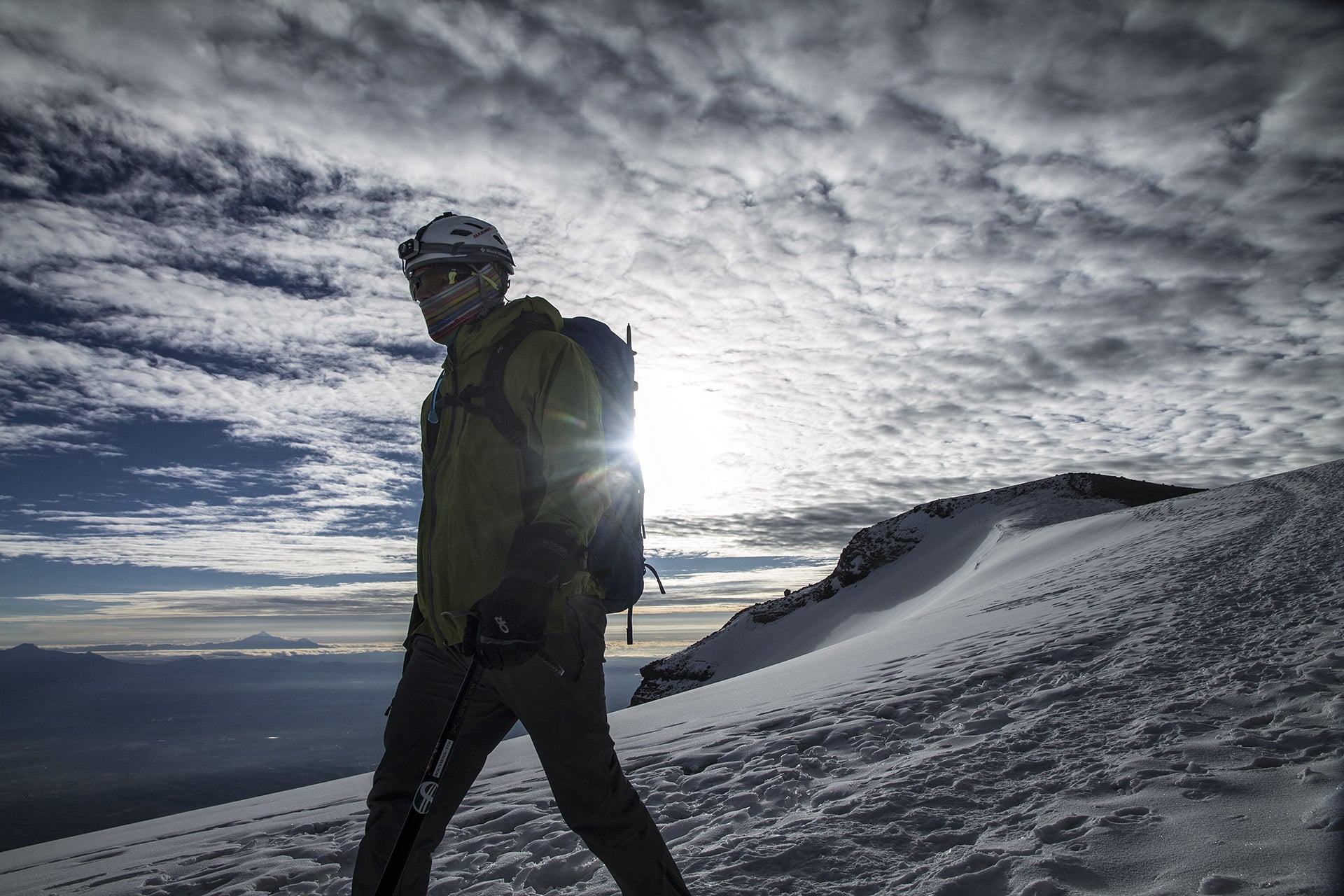
The sun continues tracing its upward arc and we continue our trudge under a sky that has taken on a blurred patchwork pattern. Any sunlight that is able to filter through bathes the landscape in eery opaque hues.
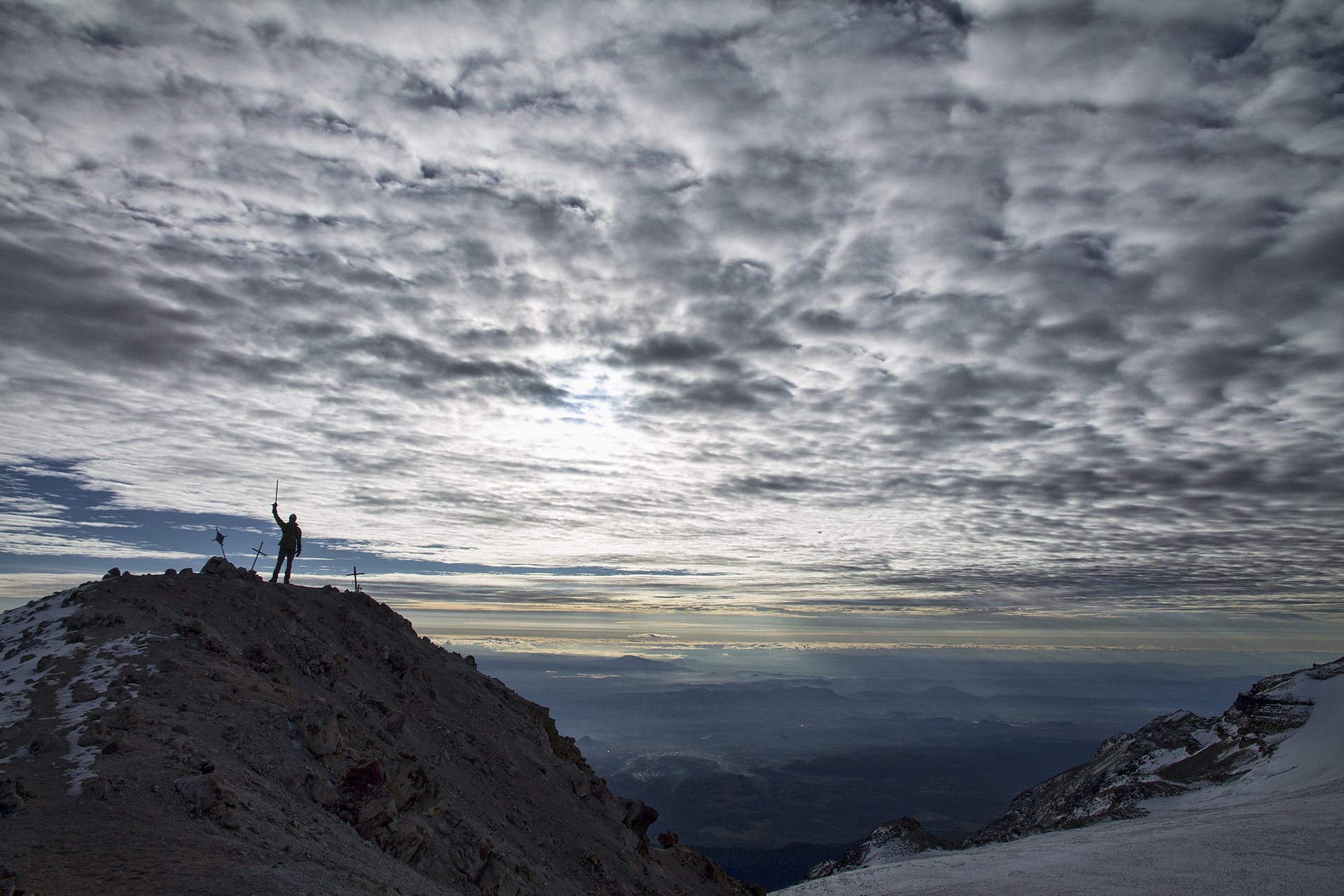
I look up toward the end of the ridgeline I am now following. My brother’s silhouette is backlit with axe raised amongst a garden of tilted summit crosses.
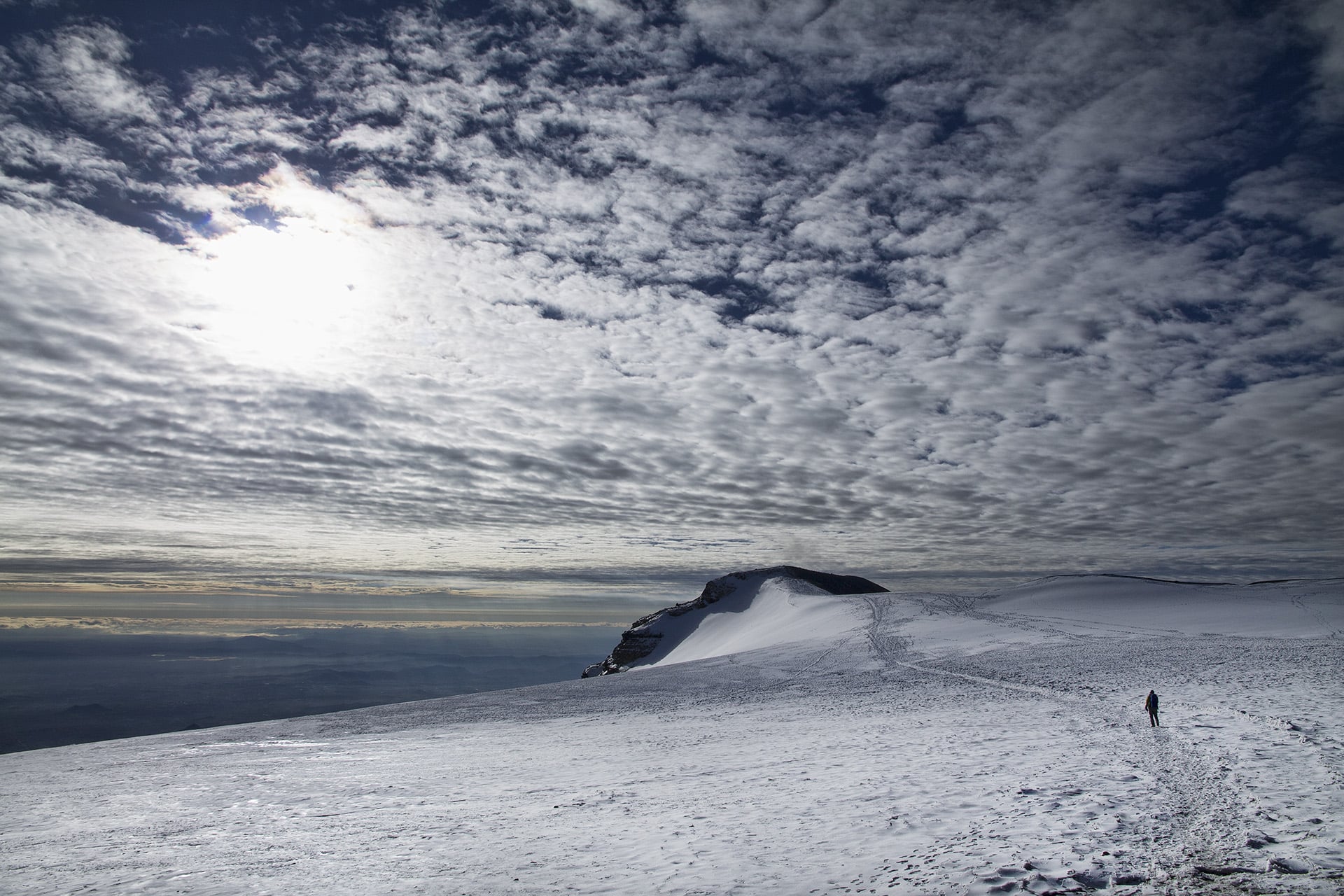
The summit is in the bag. We commence our retreat back across the glacier.
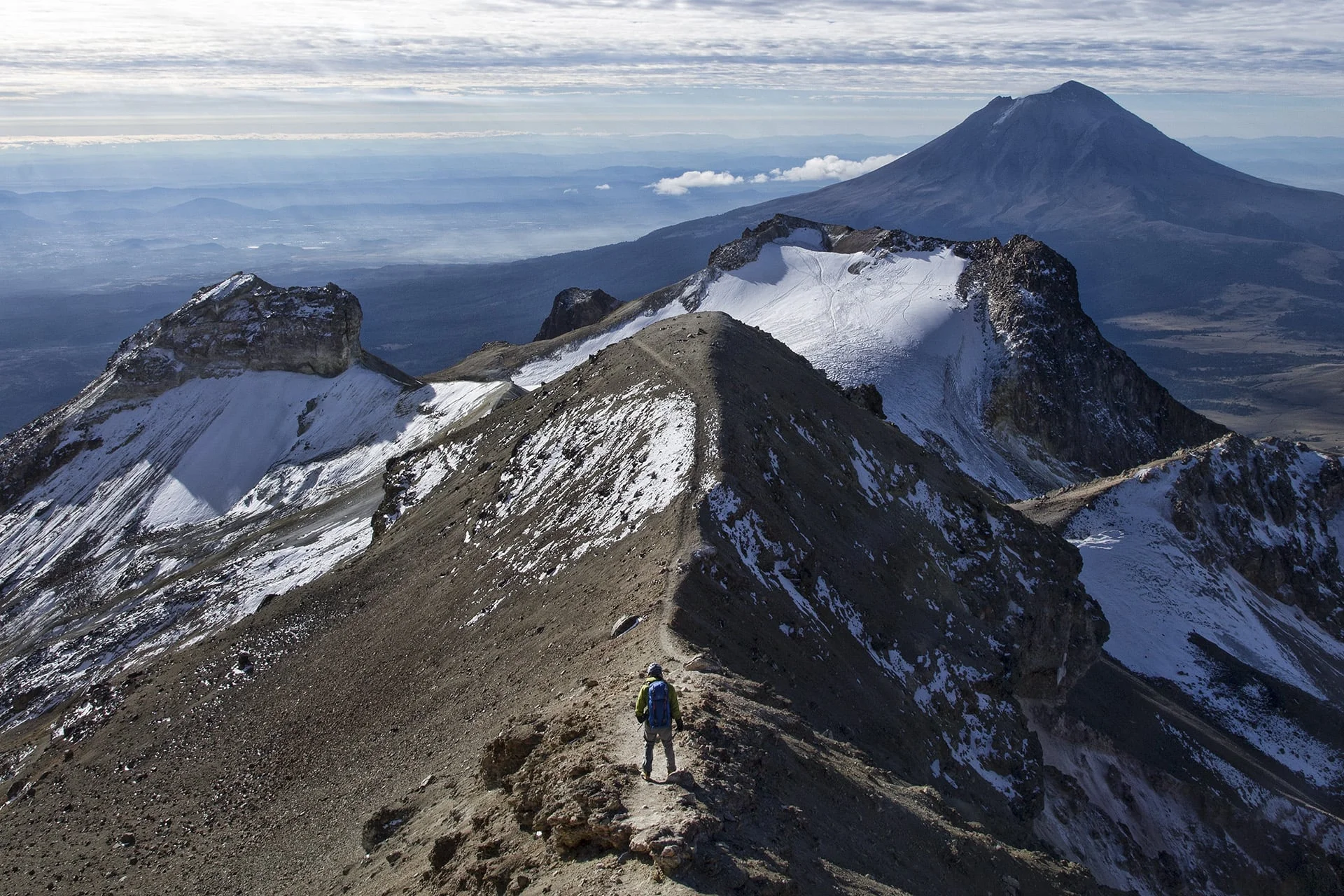
We once again lock eyes with Popocatépetl, but see that he is now silent in the face of our presence.
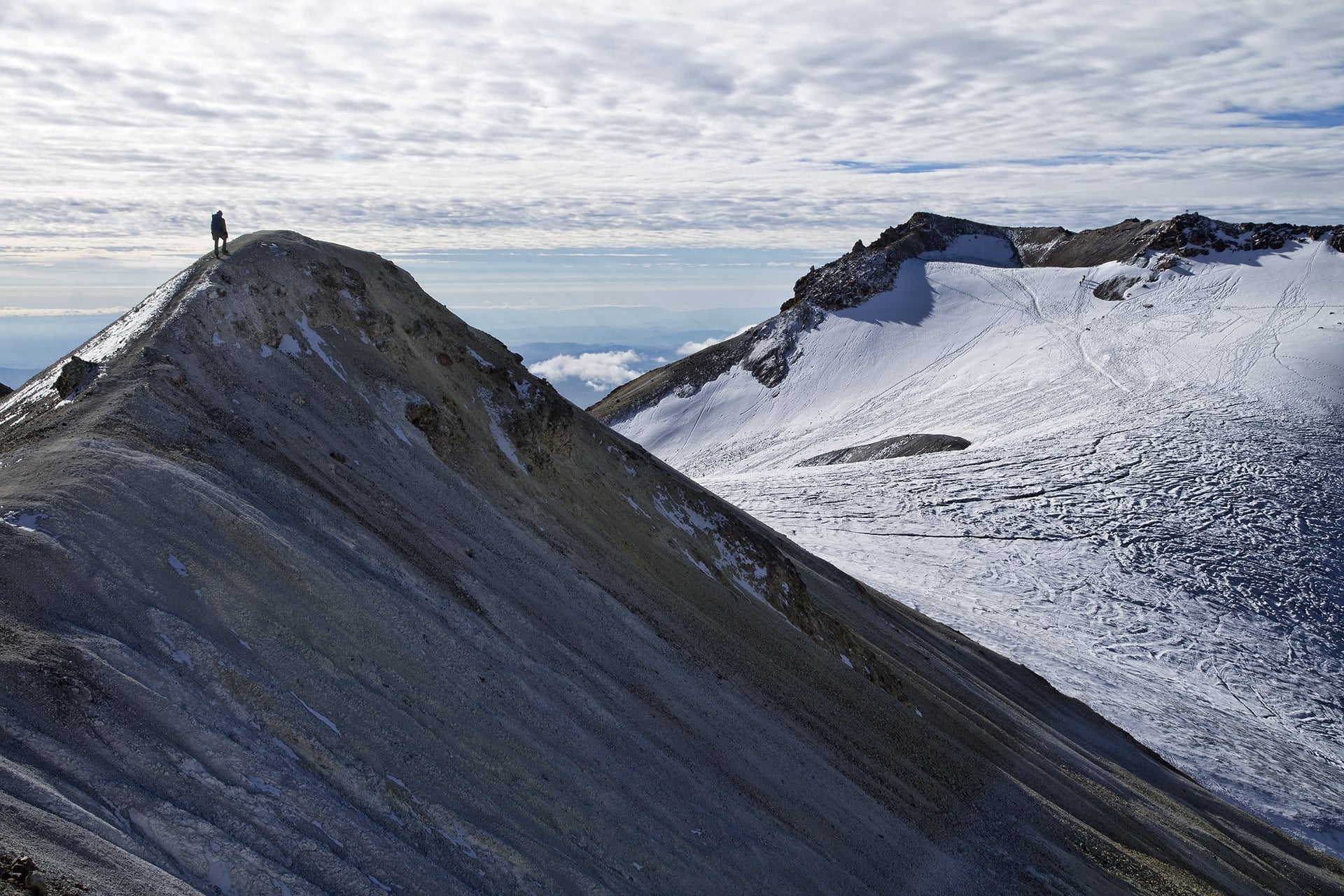
I am filled with contentment on our leisurely traverse across the landscape. Beauty is reveling in your nothingness in the face of grandeur.
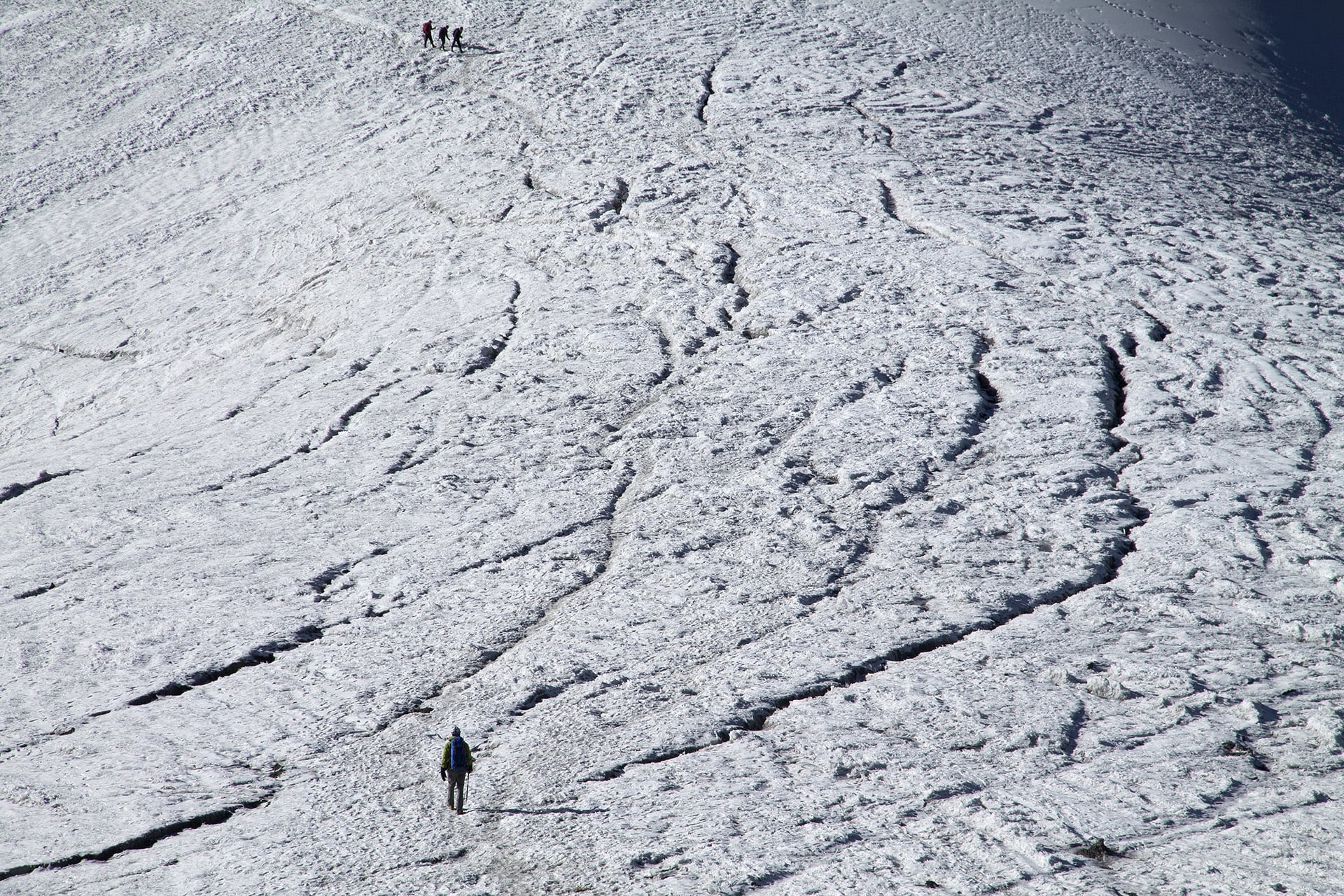
A climbing party from Guadalajara are the only other people we meet on the descent aside from a guided pair of Singaporeans who turn back from exhaustion not far from the base camp hut.
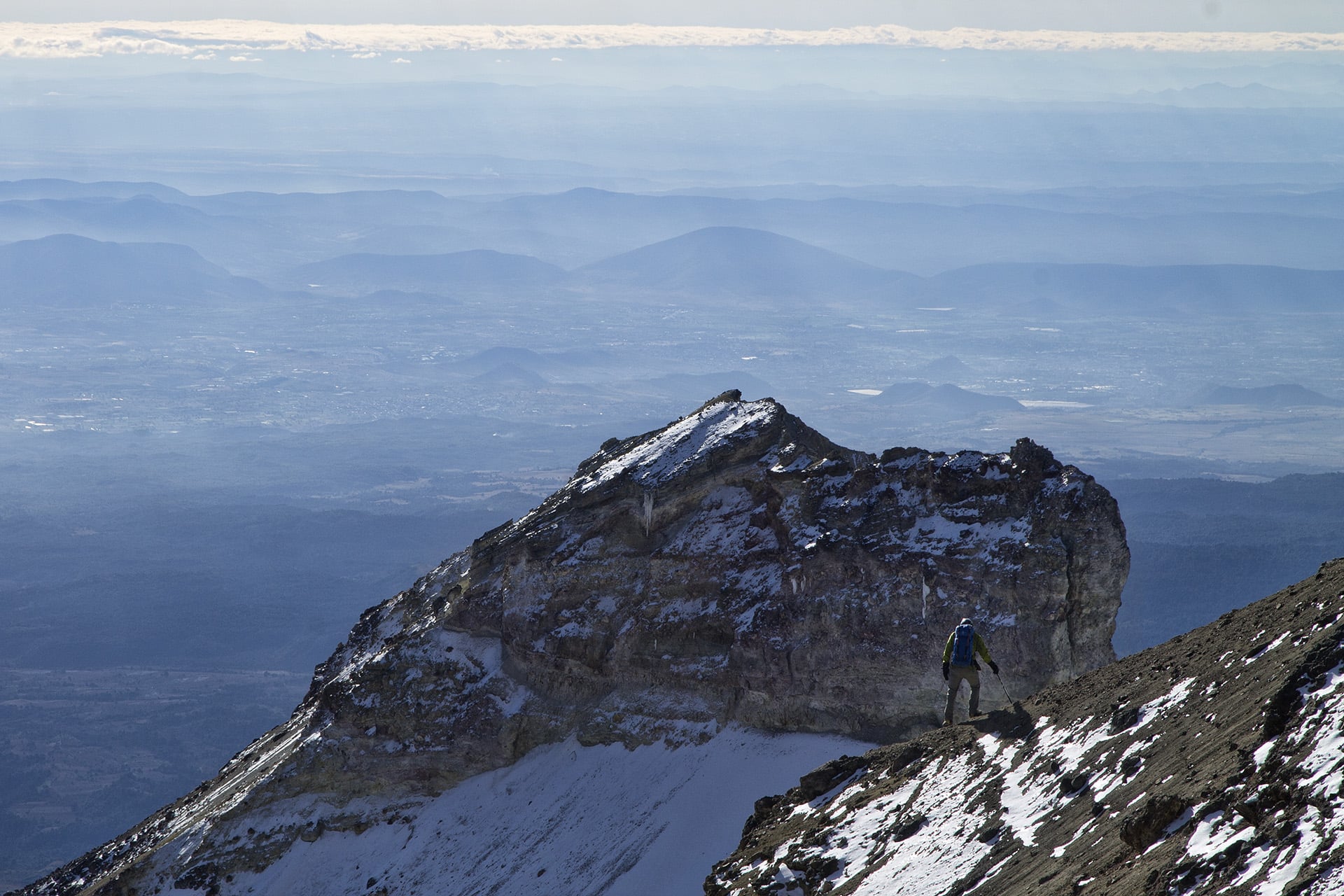
Firework smoke from the Virgen de Guadalupe celebrations floats slowly up from the valleys thousands of meters below us. To our astonishment, the faint sound of explosions from villages all around sporadically interrupts the alpine serenity. The Mexican people’s ability to celebrate any event, major or minor, will never cease to amaze me.
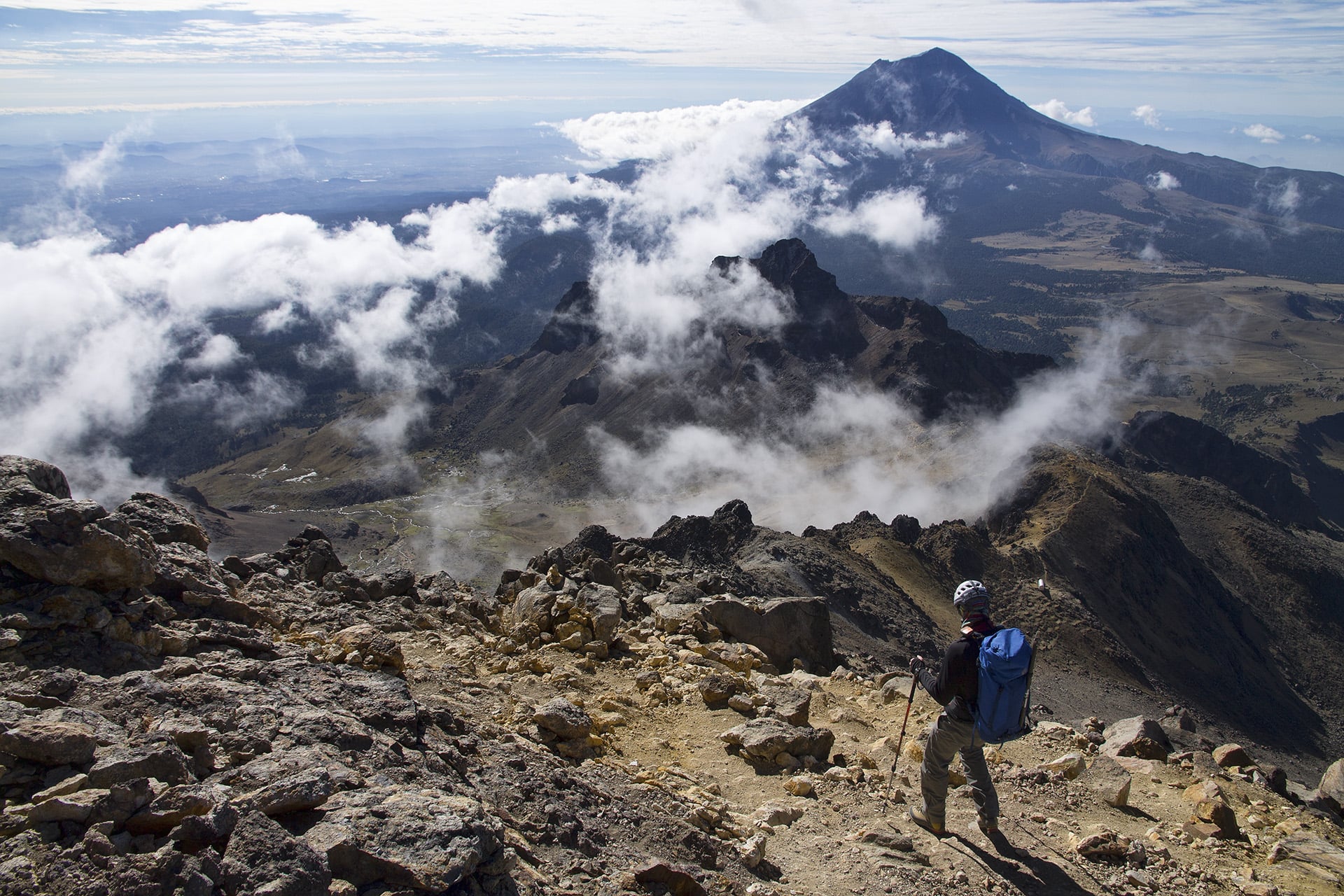
We had monitored reports of a weather system forecasted to bear down on the region for some days prior to our ascent. Making our way back to the hut, we see that clouds are forming over the range much earlier in the day than is typical. We’ve chosen our climbing window well.
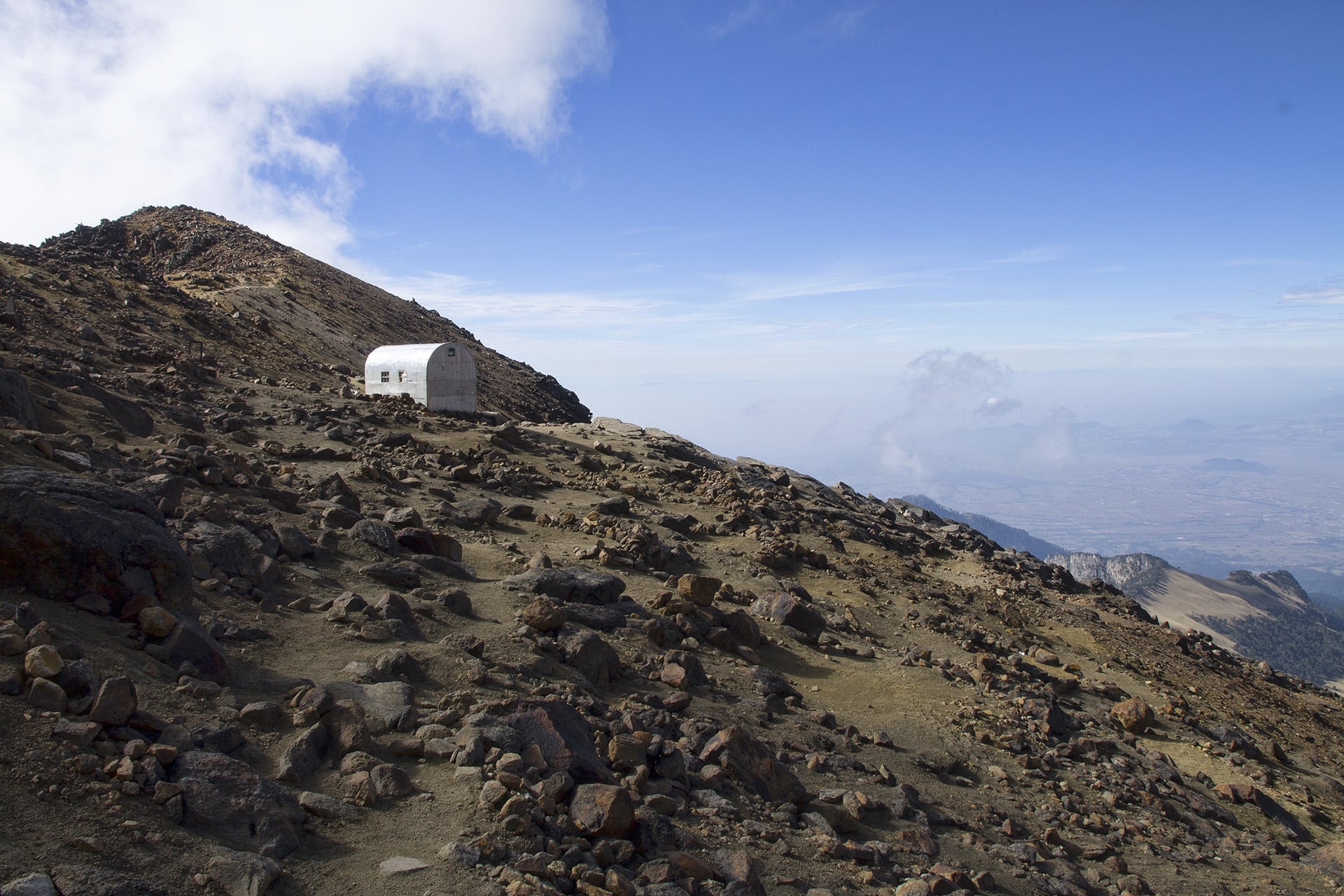
Nearing the hut reveals the terraced camp spots that years of mountaineers have sculpted upon the face of the mountain. Before collecting the gear that we had left in the hut, we take some time to make tea and instant pasta. A man wearing tennis shoes and a water belt emerges from a crest below us. This “skyrunner” from Puebla graciously accepts our offering of cookies and tells us all about his sport, effectively a spin-off of trail running that involves running up high-altitude mountains. The man jogs upward into the thickening clouds. All of a sudden our mountaineering boots and ice axes seem pathetically irrelevant, until we see him pop out from the clouds and start heading back down. The summit is only for the skyrunning elite. Still, we are humbled.
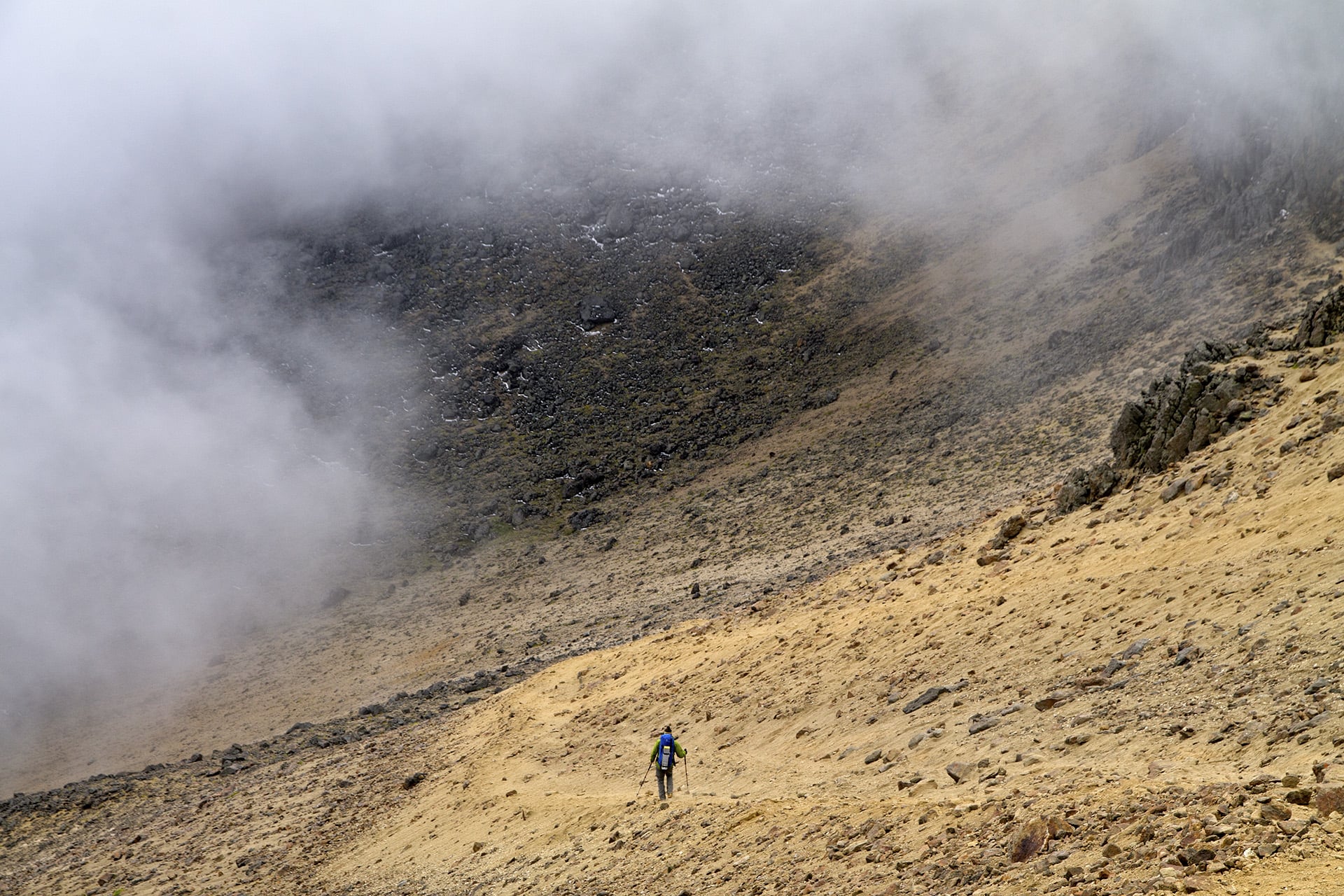
Retracing one’s steps along the approach route usually goes one of two ways. Either it is silent and contemplative or it is filled with conversation and stoke.
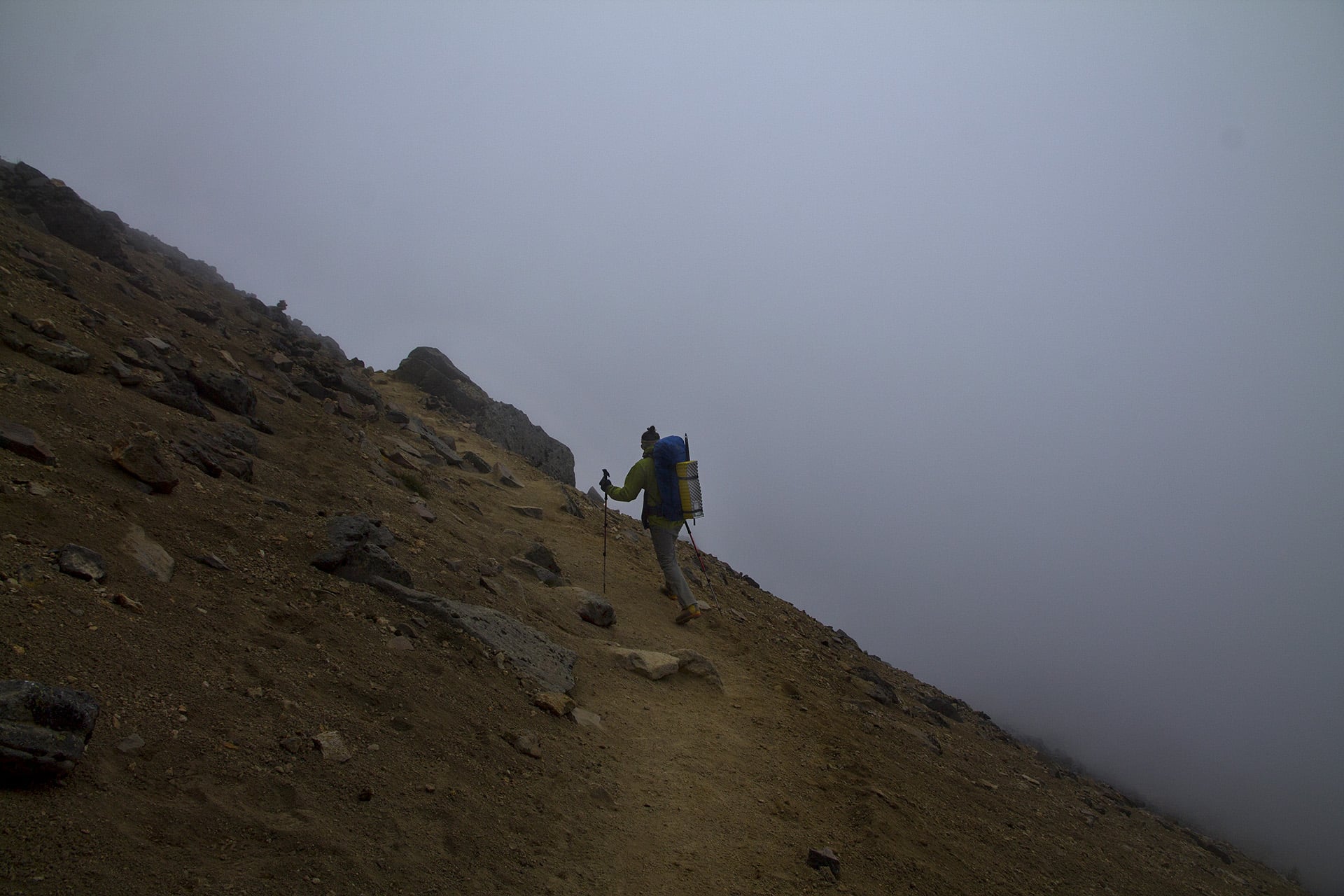
The darkening clouds make our descent muffled and uneventful. In the midst of the clouds we meet a Czech couple on a day hike. They’ve arranged for a taxi to wait for them at the trailhead, which is a great opportunity to hitch a ride, since no one is waiting for us. The haggling that undoubtedly awaits me is something that years of travel have adequately prepared me for. I relish it.
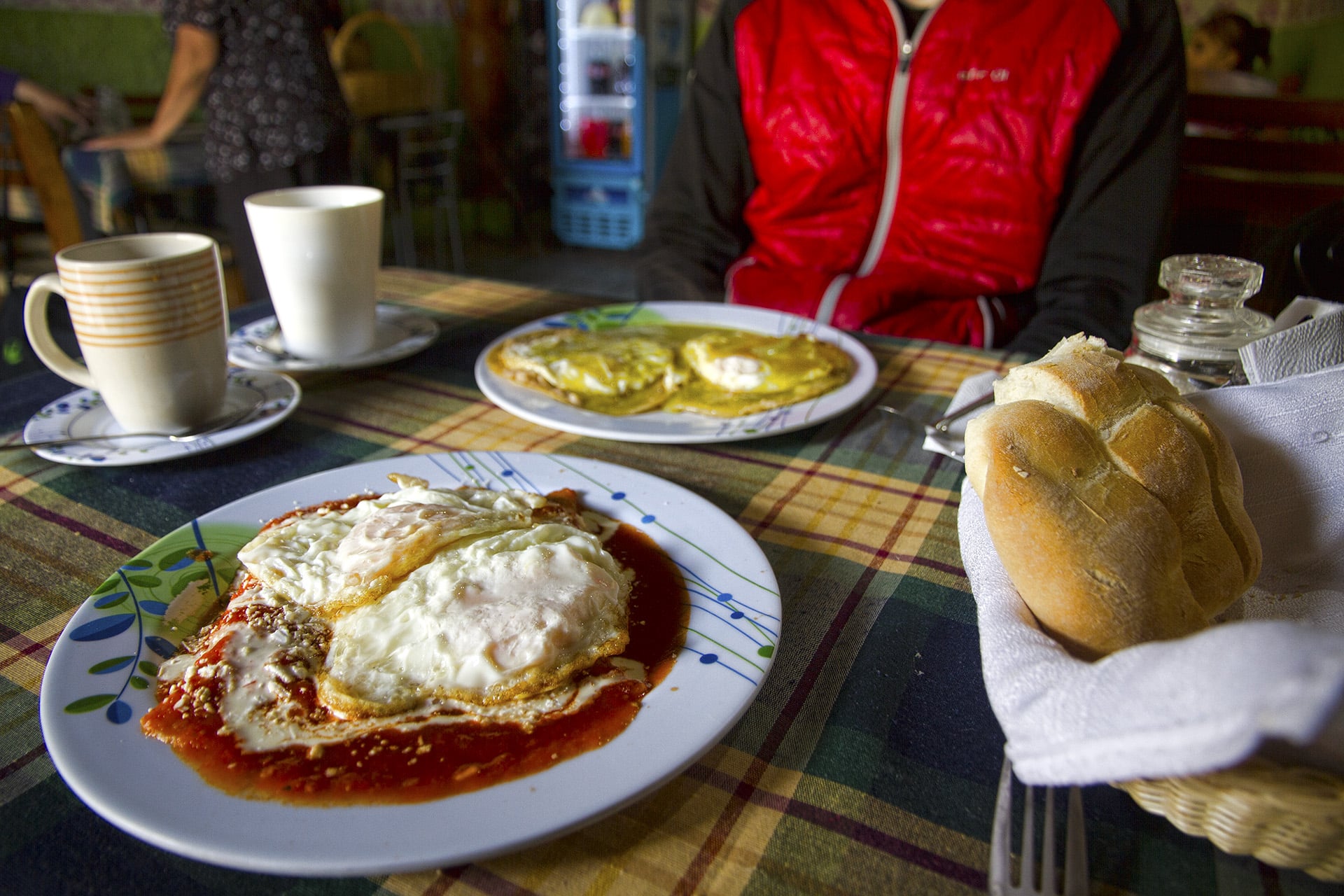
A cramped taxi ride back to Amecameca is the last leg of the journey before we are reunited with the only thing on our minds: food that has not previously been dehydrated. A successful summit swells the soul, but street food from a hole-in-the-wall satiates the stomach.
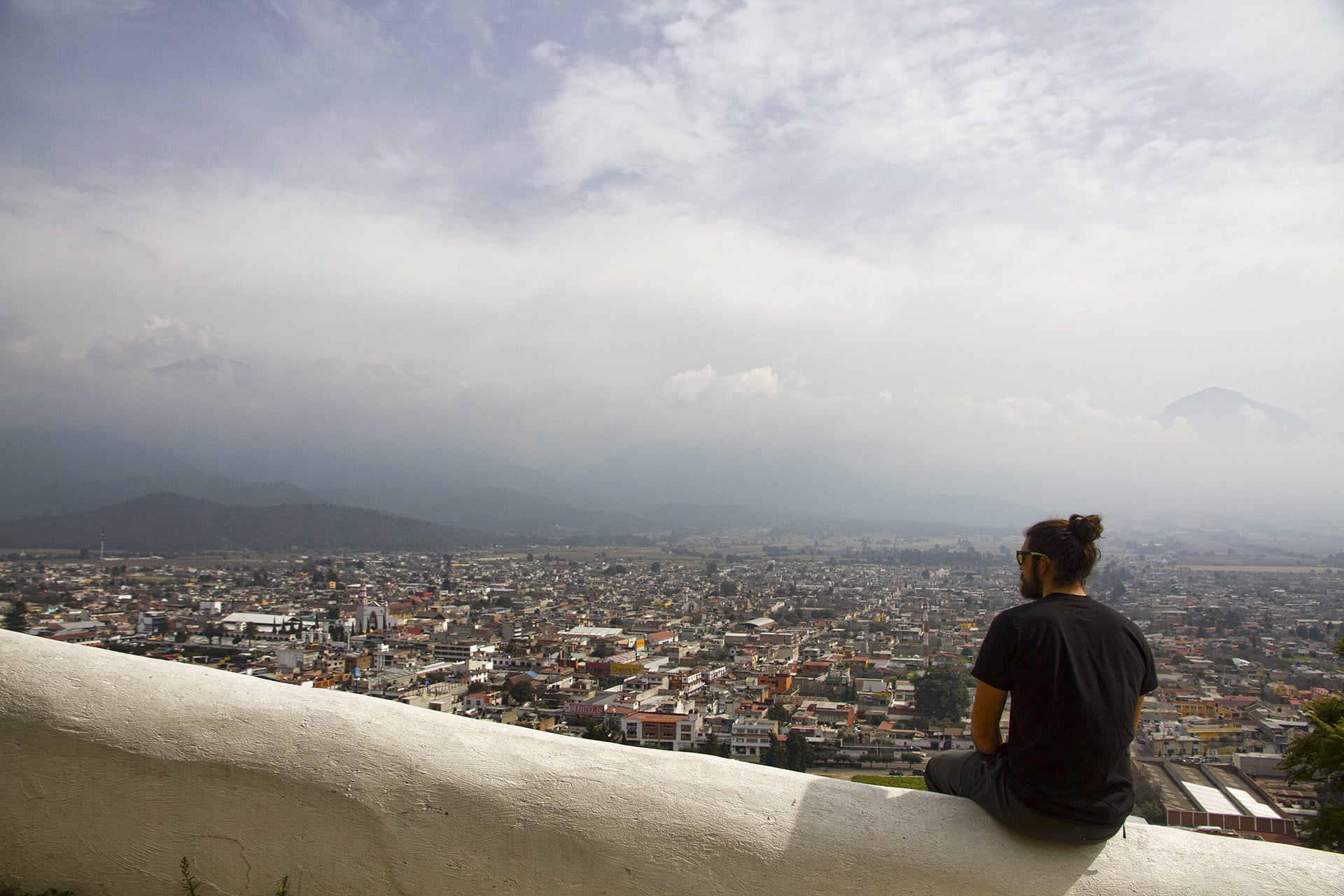
After a celebratory night of feasting on tacos al pastor, tlacoyos and atole, the small hill on the outskirts of the town provides a nice view of our sleeping woman and her guardian. Down in the town square a bus waits to take us back to the capital where the block staircases of the Teotihuacán pyramids await. We should be well acclimatized…



































